Summer 2013
Editor’s Note
In her article on a rural retreat for intellectual luminaries of the 1930s, Kate Hollander ’02 notes that German tourists now wonder why Bertolt Brecht, “that sly and worldly poet of the cities, would spend six years in this former farmhouse on a Danish island.” Rural retreats are something Marlboro College students understand very well, and indeed many have had their own intellectual fires set ablaze on this rural, unpretentious campus. Few examples are as arresting as the case of Robert MacArthur ’51, whose meteoric rise, from skinning mammals in a former farmhouse called Mather House to pioneering new mathematical approaches to ecology, is charted in an article by Dan Toomey ’79 in the following pages.
This issue of Potash Hill brings you from the aftermath of conflict and violence in Guatemala, as reported by Chrissy Raudonis ’11, to the quiet, poignant poetry of Kimberly Cloutier Green ’78. We hear from math professor Matt Ollis about measuring campus sustainability, and from freshman Christian Lampart about theater professor Paul Nelsen’s big shoes to fill. As every summer, we celebrate the graduating students and their far-reaching and innovative Plans of Concentration.
If you have some reflection on your own humble roots at Marlboro, I encourage you to share them with us. You can read responses to the last issue of Potash Hill on the Letters page.
—Philip Johansson, editor
Front cover: “Diurne #9,” by Lila Kole-Berlingieri ’13, from her senior exhibit in the Drury Gallery this spring. Lila’s Plan of Concentration in literature and visual arts investigated the role of art and narrative, especially the works of Marcel Proust and Virginia Woolf, in realizing selfhood. Photo by Dianna Noyes
A Search for Patterns: The Life of Robert MacArthur
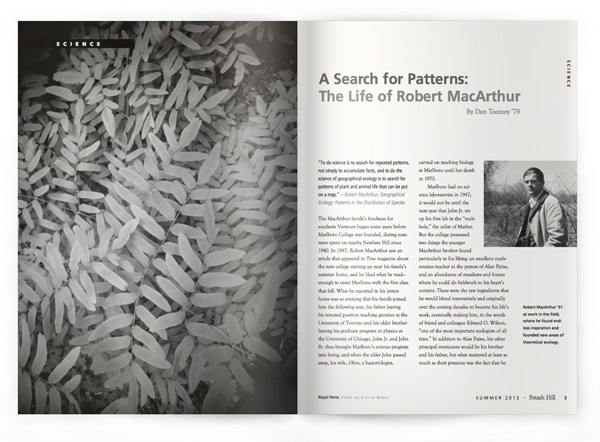
By Dan Toomey ’79
“To do science is to search for repeated patterns, not simply to accumulate facts, and to do the science of geographical ecology is to search for patterns of plant and animal life that can be put on a map.” – Robert MacArthur, Geographical Ecology: Patterns in the Distribution of Species
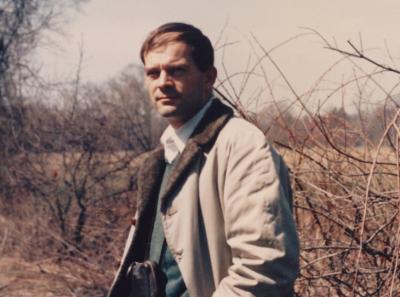 The MacArthur family’s fondness for southern Vermont began some years before Marlboro College was founded, during summers spent on nearby Newfane Hill since 1940. In 1947, Robert MacArthur saw an article that appeared in Time magazine about the new college starting up near his family’s summer home, and he liked what he read— enough to enter Marlboro with the first class that fall. What he reported in his letters home was so enticing that his family joined him the following year, his father leaving his tenured position teaching genetics at the University of Toronto and his older brother leaving his graduate program in physics at the University of Chicago. John Jr. and John Sr. thus brought Marlboro’s science program into being, and when the elder John passed away, his wife, Olive, a bacteriologist, carried on teaching biology at Marlboro until her death in 1970.
The MacArthur family’s fondness for southern Vermont began some years before Marlboro College was founded, during summers spent on nearby Newfane Hill since 1940. In 1947, Robert MacArthur saw an article that appeared in Time magazine about the new college starting up near his family’s summer home, and he liked what he read— enough to enter Marlboro with the first class that fall. What he reported in his letters home was so enticing that his family joined him the following year, his father leaving his tenured position teaching genetics at the University of Toronto and his older brother leaving his graduate program in physics at the University of Chicago. John Jr. and John Sr. thus brought Marlboro’s science program into being, and when the elder John passed away, his wife, Olive, a bacteriologist, carried on teaching biology at Marlboro until her death in 1970.
Marlboro had no science laboratories in 1947; it would not be until the next year that John Jr. set up his first lab in the “mole hole,” the cellar of Mather. But the college possessed two things the younger MacArthur brother found particularly to his liking: an excellent mathematics teacher in the person of Alan Paine, and an abundance of meadows and forests where he could do fieldwork to his heart’s content. These were the raw ingredients that he would blend innovatively and originally over the coming decades to become his life’s work, eventually making him, in the words of friend and colleague Edward O. Wilson, “one of the most important ecologists of all time.” In addition to Alan Paine, his other principal instructors would be his brother and his father, but what mattered at least as much as their presence was the fact that he could roam at will through fields and woods, honing his observation skills and thinking about what he observed.
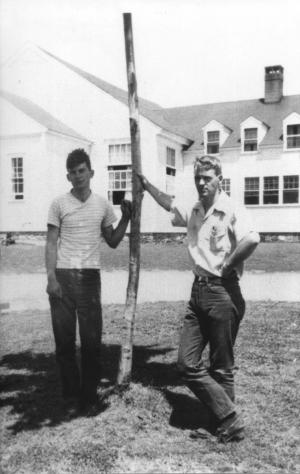 Eccentricity at Marlboro, then as now, was not only tolerated but to a degree encouraged, especially if it was exhibited within the context of the pursuit of knowledge. Robert MacArthur’s penchant for trapping small animals in the woods around the college and skinning them in his dormitory room is one such example. His two roommates in Mather, the men’s dormitory at the time, accepted this behavior more or less unconditionally at first. But one day he returned carrying by the tail a specimen of Mephitis mephitis (Latin for “noxious odor, noxious odor”), with every intention of skinning it within the close confines of the shared room. The roommates’ tolerance for eccentricity had finally reached its limit, and Robert was compelled to move his clothes, belongings, and skunk carcass to a sugar shack near where the science building now stands. There he lived contentedly for the remainder of that semester, carrying out his taxonomic studies without interference.
Eccentricity at Marlboro, then as now, was not only tolerated but to a degree encouraged, especially if it was exhibited within the context of the pursuit of knowledge. Robert MacArthur’s penchant for trapping small animals in the woods around the college and skinning them in his dormitory room is one such example. His two roommates in Mather, the men’s dormitory at the time, accepted this behavior more or less unconditionally at first. But one day he returned carrying by the tail a specimen of Mephitis mephitis (Latin for “noxious odor, noxious odor”), with every intention of skinning it within the close confines of the shared room. The roommates’ tolerance for eccentricity had finally reached its limit, and Robert was compelled to move his clothes, belongings, and skunk carcass to a sugar shack near where the science building now stands. There he lived contentedly for the remainder of that semester, carrying out his taxonomic studies without interference.
After graduating with highest honors in 1951, Robert earned an M.S. in mathematics from Brown University, then went on to the doctoral program in biology at Yale. His dissertation paper broke new ground in the field of for community ecology, introducing the idea of mathematical “niche apportionment models.” He showed that five different species of wood warblers, apparently occupying the same niche, actually hunted for their food in five different portions of the same tree. Building on this idea during a subsequent year at Oxford, he developed the “broken stick model,” theorizing that competing bird species were able to co-exist in a community by dividing the resources so that each used different portions of the niche, like pieces of a stick.
Robert returned to the United States to his first teaching appointment, at the University of Pennsylvania. He continued to publish papers that demonstrated his ability to interpret mathematically what he so keenly observed in the natural world, and in so doing pushed the field of ecology in new directions. One such study, published in Ecology by Robert and brother John, involved fieldwork at 13 different sites (one of which was a field abutting Marlboro College property) from Panama to Maine. To measure something they called “foliage height diversity,” they mounted a white board on a pole and held it aloft at each site. They then measured how far from a tree the board had to be, at different heights, for half of it to be obscured by vegetation. And they listened and watched for birds to determine how diverse the local bird community was.
“I was the one who would climb up the tree, because I was more comfortable with that,” said John, who retired in 1989 but continues to teach a class at Marlboro each year to this day. “Sometimes I laughed so hard I would almost fall out of the tree, watching Robert try to back through the for est with this pole high in the dense foliage.” What they discovered, by way of patient field observation, bird-listening, and the application of mathematical equations, was that bird species diversity could be predicted by the degree of foliage height diversity: from Panama to Maine, across many kinds of deciduous forests, the more foliage at different heights, the more species of birds can be found.
 In 1965 Robert left the University of Pennsylvania to take a position at Princeton. Shortly thereafter he wrote, with Edward O. Wilson, The Theory of Island Biogeography. Its core idea was that the number of species on an island, or any isolated habitat, is determined by the balance between immigration and extinction. The increasing number of citations the book accrued each year from its publication (when it was cited five times) through 1982 (when it peaked at 161 times) is solid confirmation that MacArthur and Wilson’s theory had become, in the words of science writer David Quammen, “one of the central paradigms of ecology.” Their basic understanding of the dynamics of isolated populations continues to inform conservation science, as researchers look for ways to address the accelerating fragmentation and separation of ecosystems brought about by human activity.
In 1965 Robert left the University of Pennsylvania to take a position at Princeton. Shortly thereafter he wrote, with Edward O. Wilson, The Theory of Island Biogeography. Its core idea was that the number of species on an island, or any isolated habitat, is determined by the balance between immigration and extinction. The increasing number of citations the book accrued each year from its publication (when it was cited five times) through 1982 (when it peaked at 161 times) is solid confirmation that MacArthur and Wilson’s theory had become, in the words of science writer David Quammen, “one of the central paradigms of ecology.” Their basic understanding of the dynamics of isolated populations continues to inform conservation science, as researchers look for ways to address the accelerating fragmentation and separation of ecosystems brought about by human activity.
In 1968 Robert was appointed Henry Fairfield Osborn Professor of Biology at Princeton. That same year he developed the “species packing” hypothesis, which argued that the number of species in a habitat is limited by the number of niches those species can potentially occupy. This suggested of course that elements of an ecosystem could be altered to attract additional desired species, a foundational premise of conservation biology today and of the movement for ecological restoration worldwide.
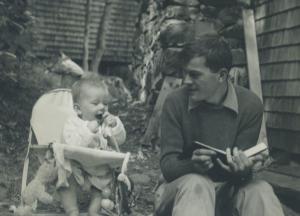 Robert’s decision to write Geographical Ecology, his final book, was spurred by the sobering news in 1971 that he had an incurable cancer. He wrote the book longhand “with no access to libraries, entirely from memory” at the family cabin on the shore of South Pond, Marlboro. He was dying, and the time remaining to collect all of his interrelated ideas under a single cover was short. Helping him were wife Betsy—who had a degree in botany—and brother John, both of whom suggested improvements to some of the chapters. Betsy typed the final manuscript. Robert called the book’s organization “phenomenological,” by which he meant that it articulated the ways in which empirical observations of phenomena are interrelated. Its prose style, as one might expect, reflects the exactitude, lucidity, and density of mathematics. The book completed, he died at the age of 42, leaving behind a remarkable legacy.
Robert’s decision to write Geographical Ecology, his final book, was spurred by the sobering news in 1971 that he had an incurable cancer. He wrote the book longhand “with no access to libraries, entirely from memory” at the family cabin on the shore of South Pond, Marlboro. He was dying, and the time remaining to collect all of his interrelated ideas under a single cover was short. Helping him were wife Betsy—who had a degree in botany—and brother John, both of whom suggested improvements to some of the chapters. Betsy typed the final manuscript. Robert called the book’s organization “phenomenological,” by which he meant that it articulated the ways in which empirical observations of phenomena are interrelated. Its prose style, as one might expect, reflects the exactitude, lucidity, and density of mathematics. The book completed, he died at the age of 42, leaving behind a remarkable legacy.
Robert once confided to Edward O. Wilson that he would “rather save an endangered habitat than create an important scientific theory.” Yet he did in fact author several important scientific theories that, since his death 40 years ago, have stood as the foundation of a profusion of research done by those who have succeeded him. This research has in turn helped preserve or restore endangered habitats in many places on the globe.
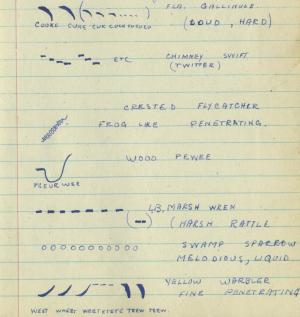 Asked once to define religion, John MacArthur responded, “The fascination with the fact that nature is so regular.” It was the regularity, or patterning, in nature that so fascinated his brother—the silhouette of foliage against a white board, for example, that coincided with the varying harmonics of birdsong heard in that same foliage. From out of this convergence of visual and aural patterns emerged other patterns that could be discerned only by a gifted mathematical imagination. Robert MacArthur saw an unmistakable beauty in patterns, both seen and imagined, over the course of his life. He said as much on the first page of his final book:
Asked once to define religion, John MacArthur responded, “The fascination with the fact that nature is so regular.” It was the regularity, or patterning, in nature that so fascinated his brother—the silhouette of foliage against a white board, for example, that coincided with the varying harmonics of birdsong heard in that same foliage. From out of this convergence of visual and aural patterns emerged other patterns that could be discerned only by a gifted mathematical imagination. Robert MacArthur saw an unmistakable beauty in patterns, both seen and imagined, over the course of his life. He said as much on the first page of his final book:
Doing science is not such a barrier to feeling or such a dehumanizing influence as is often made out. It does not take the beauty from nature. The only rules of scientific method are honest observations and accurate logic. To be great science it must also be guided by a judgment, almost an instinct, for what is worth studying. No one should feel that honesty and accuracy guided by imagination have any power to take away nature’s beauty.
One might go further to assert that in fact “doing science” actually begins with recognition of the beauty of the natural world and the embracing of it, and then asking informed and imaginative questions about what is observed. “Honesty and accuracy guided by imagination” in the pursuit of beauty is an accurate summation of Robert MacArthur’s life, a life that those of us who care about the future of the earth need to be profoundly grateful for.
Dan Toomey teaches writing and English at Landmark College, and has contributed many great articles to Potash Hill, most recently in the Winter- Spring 2007 issue. The MacArthur Prize was established in 1973 in memory of Robert MacArthur, then rededicated to his whole family for their positive impact on the science program at Marlboro College.
Ode to Evolution
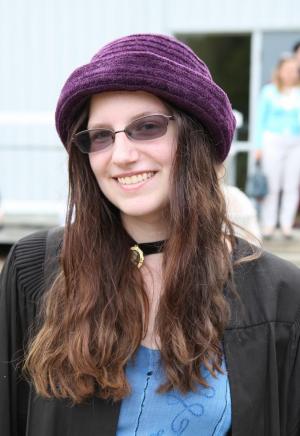 Another well-known and fairly influential scientist was Charles Darwin, who turned the Victorian world upside down with his theory of evolution by natural selection. Nikki Haug ’13 did her Plan of Concentration on the ripples of Darwin’s theory through literature, specifically the poetry of Robert Browning and Lord Alfred Tennyson. “What separated Darwin from other materialist thinkers, both before and during his time, was how much information he managed to synthesize,” said Nikki. “Darwin took what had previously been philosophical and placed it into a naturalist’s perspective, turning materialist views from opinions into facts.” She explored how Victorians, including Victorian poets, were forced to consider the idea that humanity was not distinguished from other animals and could be surpassed by a more perfect race.
Another well-known and fairly influential scientist was Charles Darwin, who turned the Victorian world upside down with his theory of evolution by natural selection. Nikki Haug ’13 did her Plan of Concentration on the ripples of Darwin’s theory through literature, specifically the poetry of Robert Browning and Lord Alfred Tennyson. “What separated Darwin from other materialist thinkers, both before and during his time, was how much information he managed to synthesize,” said Nikki. “Darwin took what had previously been philosophical and placed it into a naturalist’s perspective, turning materialist views from opinions into facts.” She explored how Victorians, including Victorian poets, were forced to consider the idea that humanity was not distinguished from other animals and could be surpassed by a more perfect race.
Your Battered Name
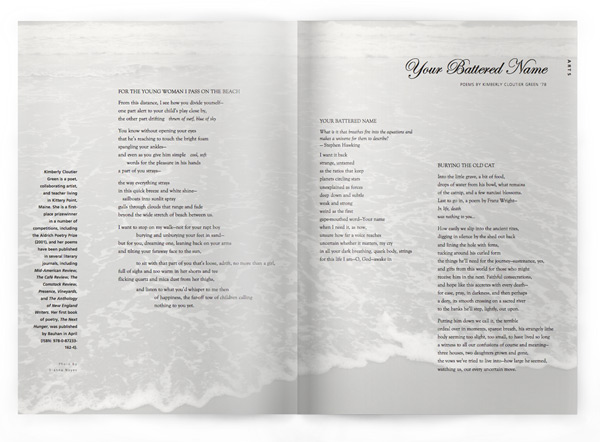
Poems by Kimberly Cloutier Green ’78
For the Young Woman I Pass on the Beach
From this distance, I see how you divide yourself—
one part alert to your child’s play close by,
the other part drifting thrum of surf, blue of sky=
You know without opening your eyes
that he’s reaching to touch the bright foam
spangling your ankles—
and even as you give him simple cool, soft
words for the pleasure in his hands
a part of you strays—
the way everything strays
in this quick breeze and white shine—
sailboats into sunlit spray
gulls through clouds that range and fade
beyond the wide stretch of beach between us.
I want to stop on my walk—not for your rapt boy
burying and unburying your feet in sand—
but for you, dreaming one, leaning back on your arms
and tilting your faraway face to the sun,
to sit with that part of you that’s loose, adrift, no more than a girl,
full of sighs and too warm in her shorts and tee
flicking quartz and mica dust from her thighs,
and listen to what you’d whisper to me then
of happiness, the far-off tow of children calling
nothing to you yet.
Your Battered Name
What is it that breathes fire into the equations and
makes a universe for them to describe?
— Stephen Hawking
I want it back
strange, untamed
as the ratios that keep
planets circling stars
unexplained as forces
deep down and subtle
weak and strong
weird as the first
gape-mouthed word—Your name
when I need it, as now,
unsure how far a voice reaches
uncertain whether it matters, my cry
in all your dark breathing, quark body, strings
for this life I am—O, God—awake in
Burying the Old Cat
Into the little grave, a bit of food,
drops of water from his bowl, what remains
of the catnip, and a few narcissi blossoms.
Last to go in, a poem by Franz Wright—
In life, death
was nothing to you…
How easily we slip into the ancient rites,
digging in silence by the shed out back
and lining the hole with ferns,
tucking around his curled form
the things he’ll need for the journey—sustenance, yes,
and gifts from this world for those who might
receive him in the next. Faithful consecrations,
and hope like this accretes with every death—
for ease, pray, in darkness, and then perhaps
a dory, its smooth crossing on a sacred river
to the banks he’ll step, lightly, out upon.
Putting him down we call it, the terrible
ordeal over in moments, sparest breath, his strangely lithe
body seeming too slight, too small, to have lived so long
a witness to all our confusions of course and meaning—
three houses, two daughters grown and gone.
the vows we’ve tried to live into—how large he seemed,
watching us, our every uncertain move.
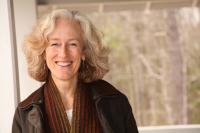 Kimberly Cloutier Green is a poet, collaborating artist, and teacher living in Kittery Point, Maine. She is a firstplace prizewinner in a number of competitions, including the Aldrich Poetry Prize (2001), and her poems have been published in several literary journals, including Mid-American Review, The Café Review, The Comstock Review, Presence, Vineyards, and The Anthology of New England Writers. Her first book of poetry, The Next Hunger, was published by Bauhan in April (ISBN: 978-0-87233- 162-4).
Kimberly Cloutier Green is a poet, collaborating artist, and teacher living in Kittery Point, Maine. She is a firstplace prizewinner in a number of competitions, including the Aldrich Poetry Prize (2001), and her poems have been published in several literary journals, including Mid-American Review, The Café Review, The Comstock Review, Presence, Vineyards, and The Anthology of New England Writers. Her first book of poetry, The Next Hunger, was published by Bauhan in April (ISBN: 978-0-87233- 162-4).
Light, Texture, and Focus
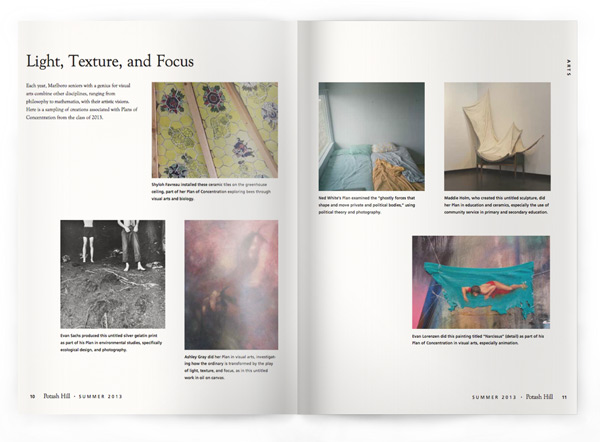
Each year, Marlboro seniors with a genius for visual arts combine other disciplines, ranging from philosophy to mathematics, with their artistic visions. Here is a sampling of creations associated with Plans of Concentration from the class of 2013.
Ashley Gray did her Plan in visual arts, investigating how the ordinary is transformed by the play of light, texture, and focus, as in this untitled work in oil on canvas.
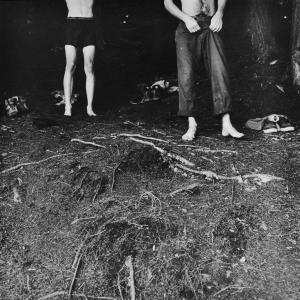 Evan Sachs produced this untitled silver gelatin print as part of his Plan in environmental studies, specifically ecological design, and photography.
Evan Sachs produced this untitled silver gelatin print as part of his Plan in environmental studies, specifically ecological design, and photography.
 Shyloh Favreau installed these ceramic tiles on the greenhouse ceiling, part of her Plan of Concentration exploring bees through visual arts and biology.
Shyloh Favreau installed these ceramic tiles on the greenhouse ceiling, part of her Plan of Concentration exploring bees through visual arts and biology.
 Ned White’s Plan examined the “ghostly forces that shape and move private and political bodies,” using political theory and photography.
Ned White’s Plan examined the “ghostly forces that shape and move private and political bodies,” using political theory and photography.
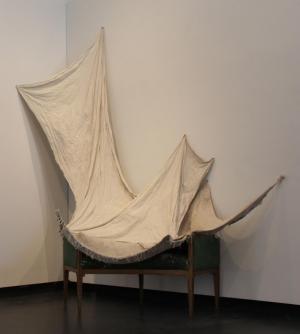 Maddie Holm, who created this untitled sculpture, did her Plan in education and ceramics, especially the use of community service in primary and secondary education.
Maddie Holm, who created this untitled sculpture, did her Plan in education and ceramics, especially the use of community service in primary and secondary education.
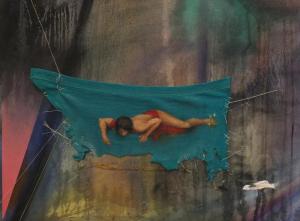 Evan Lorenzen did this painting titled “Narcissus” (detail) as part of his Plan of Concentration in visual arts, especially animation.
Evan Lorenzen did this painting titled “Narcissus” (detail) as part of his Plan of Concentration in visual arts, especially animation.
House of Straw and Wind: Exile in Southern Denmark
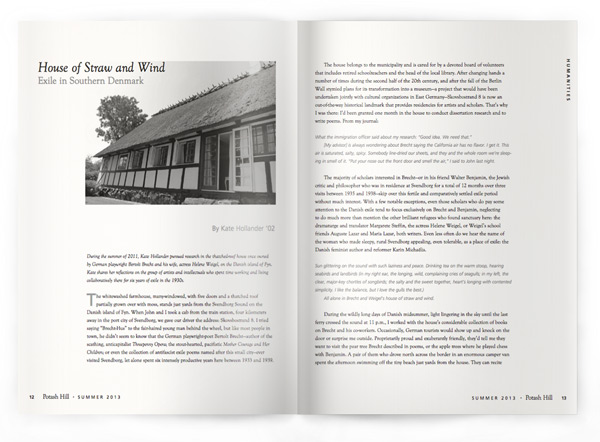
By Kate Hollander '02
During the summer of 2011, Kate Hollander pursued research in the thatched-roof house once owned by German playwright Bertolt Brecht and his wife, actress Helene Weigel, on the Danish island of Fyn. Kate shares her reflections on the group of artists and intellectuals who spent time working and living collaboratively there for six years of exile in the 1930s.
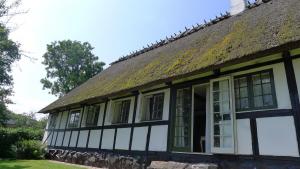 The whitewashed farmhouse, many-windowed, with five doors and a thatched roof partially grown over with moss, stands just yards from the Svendborg Sound on the Danish island of Fyn. When John and I took a cab from the train station, four kilometers away in the port city of Svendborg, we gave our driver the address: Skovsbostrand 8. I tried saying “Brecht-Hus” to the fair-haired young man behind the wheel, but like most people in town, he didn’t seem to know that the German playwright-poet Bertolt Brecht—author of the scathing, anticapitalist Threepenny Opera; the stout-hearted, pacifistic Mother Courage and Her Children; or even the collection of antifascist exile poems named after this small city—ever visited Svendborg, let alone spent six intensely productive years here between 1933 and 1939.
The whitewashed farmhouse, many-windowed, with five doors and a thatched roof partially grown over with moss, stands just yards from the Svendborg Sound on the Danish island of Fyn. When John and I took a cab from the train station, four kilometers away in the port city of Svendborg, we gave our driver the address: Skovsbostrand 8. I tried saying “Brecht-Hus” to the fair-haired young man behind the wheel, but like most people in town, he didn’t seem to know that the German playwright-poet Bertolt Brecht—author of the scathing, anticapitalist Threepenny Opera; the stout-hearted, pacifistic Mother Courage and Her Children; or even the collection of antifascist exile poems named after this small city—ever visited Svendborg, let alone spent six intensely productive years here between 1933 and 1939.
The house belongs to the municipality and is cared for by a devoted board of volunteers that includes retired schoolteachers and the head of the local library. After changing hands a number of times during the second half of the 20th century, and after the fall of the Berlin Wall stymied plans for its transformation into a museum—a project that would have been undertaken jointly with cultural organizations in East Germany—Skovsbostrand 8 is now an out-of-the-way historical landmark that provides residencies for artists and scholars. That’s why I was there: I’d been granted one month in the house to conduct dissertation research and to write poems. From my journal:
What the immigration officer said about my research: “Good idea. We need that.”
[My advisor] is always wondering about Brecht saying the California air has no flavor. I get it. This air is saturated, salty, spicy. Somebody line-dried our sheets, and they and the whole room we’re sleeping in smell of it. “Put your nose out the front door and smell the air,” I said to John last night.
The majority of scholars interested in Brecht—or in his friend Walter Benjamin, the Jewish critic and philosopher who was in residence at Svendborg for a total of 12 months over three visits between 1935 and 1938—skip over this fertile and comparatively settled exile period without much interest. With a few notable exceptions, even those scholars who do pay some attention to the Danish exile tend to focus exclusively on Brecht and Benjamin, neglecting to do much more than mention the other brilliant refugees who found sanctuary here: the dramaturge and translator Margarete Steffin, the actress Helene Weigel, or Weigel’s school friends Auguste Lazar and Maria Lazar, both writers. Even less often do we hear the name of the woman who made sleepy, rural Svendborg appealing, even tolerable, as a place of exile: the Danish feminist author and reformer Karin Michaëlis.
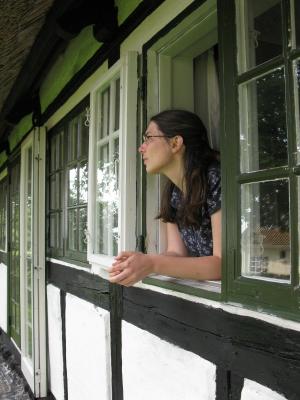 Sun glittering on the sound with such laziness and peace. Drinking tea on the warm stoop, hearing seabirds and landbirds (in my right ear, the longing, wild, complaining cries of seagulls; in my left, the clear, major-key chortles of songbirds; the salty and the sweet together, heart’s longing with contented simplicity. I like the balance, but I love the gulls the best.)
Sun glittering on the sound with such laziness and peace. Drinking tea on the warm stoop, hearing seabirds and landbirds (in my right ear, the longing, wild, complaining cries of seagulls; in my left, the clear, major-key chortles of songbirds; the salty and the sweet together, heart’s longing with contented simplicity. I like the balance, but I love the gulls the best.)
All alone in Brecht and Weigel’s house of straw and wind.
During the wildly long days of Danish midsummer, light lingering in the sky until the last ferry crossed the sound at 11 p.m., I worked with the house’s considerable collection of books on Brecht and his co-workers. Occasionally, German tourists would show up and knock on the door or surprise me outside. Proprietarily proud and exuberantly friendly, they’d tell me they want to visit the pear tree Brecht described in poems, or the apple trees where he played chess with Benjamin. A pair of them who drove north across the border in an enormous camper van spent the afternoon swimming off the tiny beach just yards from the house. They can recite poems from Brecht’s volume Svendborger Gedichte, “Svendborg Poems,” which describe this house as a place of profound but uneasy refuge. They wonder why Brecht, that sly and worldly poet of the cities, would spend six years in this former farmhouse on a Danish island.
Their English is good and my German is fair, but I don’t get around to telling them that the answer to their question lies in Vienna, where Michaëlis, author of the controversial novel The Dangerous Age, taught at an extraordinary school—a school whose list of teachers and graduates included some of the great artists and thinkers of Central Europe, including one with whom the Marlboro community will be familiar: Ruldof Serkin. Michaëlis became a mentor to the aspiring young actress Helene Weigel through this school, and years later it was to Michaëlis’s house on the tiny island of Thurø that Weigel and Brecht first came in flight from Germany following Hitler’s rise to power. With funds lent by Michaëlis herself, Brecht and Weigel purchased the thatched-roof house at Skovsbostrand 8. You don’t hear the name Karin Michaëlis very much these days, but in Southern Fyn, it’s everywhere.
The museum is the only remaining “work house” in Scandinavia. You buy tickets and you go in and see what a miserable, horrible place it was and how everyone suffered before the welfare state. I wander around for a while trying to find the archives. Eventually I see a little map, go back around the side (for the second time), open the door...nobody in sight...ring the bell...a woman comes. Yes, it is the archives. Hanne will help me.
Hanne comes. She is a very nice energetic archive lady. At first she tells me she doesn’t have anything for me...the library archive would have it...or this other archive that covers the part of Svendborg the house is in. Then I see she has a calendar with a picture of KM. “Karin Michaëlis!” I say. “I am also studying her.” Oh! Well, now she might have things for me... she calls in another woman, also named Hanne. They scurry around. Yes, they have something. A whole file on the Brecht house. Another on KM. They show me into the big reading room...long table, handsome and homey.
They give me some gloves so I can look at some photos of Michaëlis at her house, Torrelore. She has great hats in every photo. I say I like her hats. Hanne says, “She was a very special lady.” There is such warmth here when anyone speaks about her. But, they all insist, she isn’t known in Denmark now.
The spring before I came to Svendborg, I was in touch with members of the Karin Michaëlis Society, which includes scholars and amateurs interested in her work and life. While at Skovsbostrand 8, three of them come to visit. I provide tea and miserable biscuits that I ruin through my inexperience with baking by weight and miscalculating temperatures in Celsius. They arrive with their arms full of things for me, whom they’ve never met: a huge bag of beautiful breads from a bakery on Thurø, a big tub of home-grown red currants, articles to read, a book. Languages fly: German, English, Danish, even Swedish, as we struggle to communicate, share, and read out loud to one another. Before they leave, they hug me tight. I’m almost undone by their kindness and generosity, which they insist is in the spirit of the selfless-to-afault Michaëlis herself. In tears as they drive away, I feel sure I’ve been touched, through them, by her warm and giving spirit.
Lightning over the ocean last night, and wind and rain. I feel safe in this little house, even with its five doors for escaping through.
A thatched roof is just as good as any other at keeping the rain out. This became obvious to me when a storm parked just off the coast for 72 hours toward the end of July; the rain lashed and the wind was so strong I could barely push open the door to go outside. But only the first inch or two of the reeds that make up the roof were soaked through; the rest of the thatch was totally dry.
A thatched roof needs to be replaced every 50 years or so. These days, historiographies last a much shorter time—and that’s probably not a bad thing. In the 60 years since Brecht’s death, scholars have understood him in an ever-evolving variety of ways: first as a solitary (if philandering) genius, then as an exploiter of women and even a plagiarist, and finally as the vital but not dominating center of a series of collaborative circles. I’m hoping to go a step further by showing how this particular community of artists, intellectuals, and socialists actually worked together in exile. The house at Skovsbostrand 8 is at the heart of that—reminding us that even great intellectuals have material needs for shelter, nourishment, and comfort. More than just a place of refuge, this house was a laboratory for artistic and intellectual collaboration, a place where various and sometimes contradictory ideas of socialism came into contact with the necessities of exile.
A Ph.D. candidate in modern European history at Boston University as well as a published poet, Kate Hollander is writing her dissertation on the artists and intellectuals who gathered at Skovsbostrand 8. She lives in Boston with John Coakley ’02.
Escaping to Home
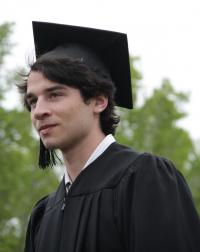 “It is easy to spend a lot of time alone in the woods with oneself. It is truly hard to be alone with other people,” said Dane Fredericks ‘13, who did his Plan of Concentration on the theme of escape in American literature, focusing on Mark Twain, Flannery O’Conner, and Cormac McCarthy. His independent study was an essay based on a hitchhiking trip he took over winter break, comprising an oral history of the people he met. “I think that I made most of the people I encountered a little bit uncomfortable. Certainly they often made me uncomfortable,” said Dane, who learned as much about himself as his subjects. “I discovered that all the best stories came when I stopped trying to be someplace else and admitted that I wanted to be home. Home anywhere.”
“It is easy to spend a lot of time alone in the woods with oneself. It is truly hard to be alone with other people,” said Dane Fredericks ‘13, who did his Plan of Concentration on the theme of escape in American literature, focusing on Mark Twain, Flannery O’Conner, and Cormac McCarthy. His independent study was an essay based on a hitchhiking trip he took over winter break, comprising an oral history of the people he met. “I think that I made most of the people I encountered a little bit uncomfortable. Certainly they often made me uncomfortable,” said Dane, who learned as much about himself as his subjects. “I discovered that all the best stories came when I stopped trying to be someplace else and admitted that I wanted to be home. Home anywhere.”
Justice and Truth in the Ixil Region
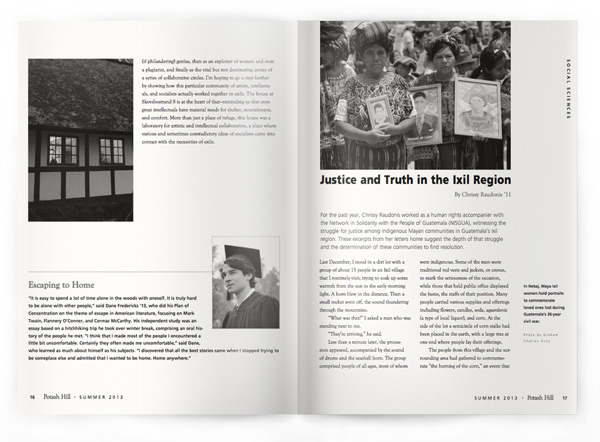
By Chrissy Raudonis ’11
For the past year, Chrissy Raudonis worked as a human rights accompanier with the Network in Solidarity with the People of Guatemala (NISGUA), witnessing the struggle for justice among indigenous Mayan communities in Guatemala’s Ixil region. These excerpts from her letters home suggest the depth of that struggle and the determination of these communities to find resolution.
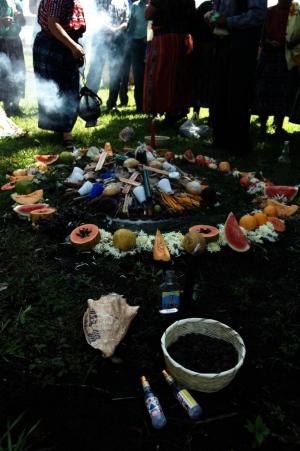 Last December, I stood in a dirt lot with a group of about 15 people in an Ixil village that I routinely visit, trying to soak up some warmth from the sun in the early morning light. A horn blew in the distance. Then a small rocket went off, the sound thundering through the mountains.
Last December, I stood in a dirt lot with a group of about 15 people in an Ixil village that I routinely visit, trying to soak up some warmth from the sun in the early morning light. A horn blew in the distance. Then a small rocket went off, the sound thundering through the mountains.
“What was that?” I asked a man who was standing next to me.
“They’re arriving,” he said.
Less than a minute later, the procession appeared, accompanied by the sound of drums and the seashell horn. The group comprised people of all ages, most of whom were indigenous. Some of the men wore traditional red vests and jackets, or cotones, to mark the seriousness of the occasion, while those that held public office displayed the bastos, the staffs of their position. Many people carried various supplies and offerings including flowers, candles, soda, aguardiente (a type of local liquor), and corn. At the side of the lot a semicircle of corn stalks had been placed in the earth, with a large tree at one end where people lay their offerings.
The people from this village and the surrounding area had gathered to commemorate “the burning of the corn,” an event that occurred during Guatemala’s decades of internal armed conflict. One day in 1982, the army arrived with several hundred Ixil Self-Defense Civil Patrol (PAC) members, with orders to gather all of the corn that was drying in the fields awaiting the harvest. The army explained to the PAC members that they were going to distribute the corn to the communities. The PAC members spent the day gathering all the corn in the area, including part of the harvest of several other villages, and dumping it in the lot, forming a gigantic pile.
When the work was done, instead of distributing the food, the soldiers burned the whole heap, throwing the villagers’ clothes on top, including the women’s traditional, handmade huipiles and red cortes: their shirts and skirts. Witnesses from a village in the valley below, miles away, were able to see the giant “volcano of corn.” Sadly, the harvest was not the only loss of the day. The soldiers also threw several people on the fire alive, including a blind, elderly woman. The loss of life, and of the harvest, was devastating for the close-knit community of subsistence farmers for whom corn is sacred. Culturally, the burning of the corn was an unthinkable act.
To remember the past and beg forgiveness for the destruction of the harvest, Mayan priests lit a ceremonial fire. Participants watched and prayed toward the four directions. The air was full of the fragrance of smoke, the sound of the drums and chirmiria (a wind instrument), and occasional rockets, whose white tails marked the cloudless, blue sky. At one point, a man approached my partner and me. In the palm of his hand were the charred remains of corn kernels that he had found by digging a little in the dirt. It was powerful to witness the physical remains of the event, still present in the ground, decades later.
 During Guatemala’s 36-year-long civil war, which ended in 1996, this region was called the “Ixil Triangle” by the military. It was the site of severe civilian repression and control through military checkpoints, the concentration of populations in model villages, and coerced inscription in armed civilian patrol groups. The conflict resulted in the massacres of civilians by the army and the displacement of entire communities.
During Guatemala’s 36-year-long civil war, which ended in 1996, this region was called the “Ixil Triangle” by the military. It was the site of severe civilian repression and control through military checkpoints, the concentration of populations in model villages, and coerced inscription in armed civilian patrol groups. The conflict resulted in the massacres of civilians by the army and the displacement of entire communities.
My work in the region is greatly tied to this history, although the specifics of my day-to-day activities vary. Some days I spend in different communities, visiting witnesses in genocide cases. While accompaniment work hopes to dissuade attacks and threats against those who are accompanied, there is also a strong element of solidarity in my interactions with many of the people that I visit. I talk with villagers about their children, their crops, and the local community to try to show that they are not alone in the huge and confusing process that is the search for justice and truth in Guatemala. Other days I spend accompanying meetings with witnesses and the organizations that represent them and with groups that are fighting to keep the control of land and natural resources in the hands of the local communities.
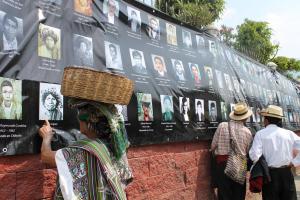 My first visit to a community showed me how the conflict has influenced people’s perspectives and how the logic of resistance and survival is very different from what I’m accustomed to. This particular community is small and fairly isolated—three hours by bus from the the closest town with police and government offices. The village has no electricity or running water. A single, wide dirt road connects it to other towns.
My first visit to a community showed me how the conflict has influenced people’s perspectives and how the logic of resistance and survival is very different from what I’m accustomed to. This particular community is small and fairly isolated—three hours by bus from the the closest town with police and government offices. The village has no electricity or running water. A single, wide dirt road connects it to other towns.
During the evening, I was sitting in a wooden chair next to a cook fire in the house I was staying in, drinking coffee with my partner and the woman who was hosting us. At one point, the woman started to talk about the war and mentioned some of the violence and hardships that the townspeople suffered. She briefly told us about the soldiers coming to the town and killing villagers. But what she wanted to talk about was her worry that it would happen again. She pointed toward the road and explained that this road would make it easy for the army to come back anytime it wanted to. As my partner tried to reassure her as best she could, I found myself considering a whole different perspective.
A lot of people that I’ve met in Guatemala have talked about the need for more development and less isolated villages. This was my first time hearing the concern that being connected and accessible would also make the population more vulnerable. Something as simple as a dirt road can be a source of worry, especially for those who are still traumatized by their war experiences.
Unfortunately, such worries are not unfounded. The country is becoming increasingly militarized in some areas, with the stated purpose of fighting drug trafficking. However, in most cases the militarized areas are also rich in natural resources, and many people see the increase in military outposts and bases as a means of providing economic security to investors rather than protecting the nation. The state of siege imposed on the town of Barillas last May and the massacre of seven peaceful protesters by soldiers in Totonicapan in October show that the government is also disposed to use its military power to control the civilian population.
 Although most of the land in the Ixil region has relatively low agricultural potential, the area’s mineral wealth and abundance of rivers make it a popular site for mining and hydroelectric projects. Conflicts over land and natural resources are widespread through the region and often affect my work as an accompanier.
Although most of the land in the Ixil region has relatively low agricultural potential, the area’s mineral wealth and abundance of rivers make it a popular site for mining and hydroelectric projects. Conflicts over land and natural resources are widespread through the region and often affect my work as an accompanier.
For example, one community that I visit sits high up in the mountains, just under a forested ridgeline. From the road that goes through the town, I can look out over the valley below, bounded by a parallel ridge. The vista is patterned with cornfields, forests, and towns that are connected by winding dirt roads. The village is picturesque, with its expansive green fields full of grazing sheep backdropped by distant mountains, but I keep my camera in my bag. The tranquil-seeming setting is of great interest to a Mexican oil company that hopes to extract barite, an important mineral in the oil drilling process.
When my partner and I leave the community, we go by the main road, even though we know that there is a shorter and reportedly very pretty path that can also take us to our next destination. As outsiders, we have to tread with caution, because local residents are highly concerned about company employees entering their territory. One man from the area explained to me that the community isn’t against development in and of itself. They want development, but a development that comes from within the community and benefits the community. While this village has managed to keep land ownership in the hands of local residents, others are less fortunate and find themselves with less leverage against the interlocked interests of corporations and the national government.
The process of losing local control over land is closely tied to the internal armed conflict. In 1984, in the middle of the violence, the government nationalized over 3,800 acres of land in one town, without notifying the local population. It wasn’t until a few years ago that the community discovered they were no longer the owners of their communal land, or ejido, when a government employee let the information slip.
During June and July, my partner and I accompanied meetings convened by a collective called Resistencia de los Pueblos (Resistance of the People), which were intended to inform villagers about what had happened to their land and the future plans of mining and hydroelectric companies in the area. Land security and environmental quality are of the utmost importance to the local people, who depend on subsistence agriculture for a large part of their livelihood. As one member of the collective explained to a group, “It’s a sin to not defend the land, because without land we don’t have life.”
Chrissy Raudonis graduated from the World Studies Program with a Plan of Concentration in environmental studies and Spanish, focusing on social and environmental issues around mining in Latin America. After accompanying Ixil witnesses and their supporters involved in the ongoing case for genocide against former general José Efraín Ríos Montt, she returned to the U.S. in May.
Roots of Genocide
 “One of the primary complications of studying genocide, and what precedes it, is that the process is not linear or easily reductive,” said Taylor Burrows ’13, who did her Plan of Concentration on the social and political roots of genocide. Faced with the challenges of complicated and interrelated social, political, and historical factors, Taylor teased out elements that she felt most directly contributed to systemic violence in Bosnia and Rwanda. She considers it good news that no single factor launches a path to genocide, offering many junctures for intervention. “As many scholars have reminded us, genocide is a relatively rare occurrence, despite the overwhelming number of ethnically, politically, and nationally diverse states,” said Taylor. “Even within the realm of ethnic conflict, systemic violence is rarely the outcome.”
“One of the primary complications of studying genocide, and what precedes it, is that the process is not linear or easily reductive,” said Taylor Burrows ’13, who did her Plan of Concentration on the social and political roots of genocide. Faced with the challenges of complicated and interrelated social, political, and historical factors, Taylor teased out elements that she felt most directly contributed to systemic violence in Bosnia and Rwanda. She considers it good news that no single factor launches a path to genocide, offering many junctures for intervention. “As many scholars have reminded us, genocide is a relatively rare occurrence, despite the overwhelming number of ethnically, politically, and nationally diverse states,” said Taylor. “Even within the realm of ethnic conflict, systemic violence is rarely the outcome.”
Liberated by Education
From the commencement remarks of President Ellen McCulloch-Lovell
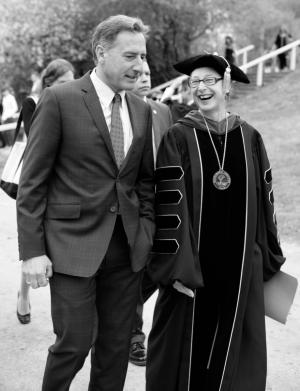 …There’s something called the White House Scorecard that purports to measure the “value and performance” of colleges. Here’s what it measures: net price; graduation rate; loan default rate; the median amount borrowed; and the type of job and salary earned after graduation.
…There’s something called the White House Scorecard that purports to measure the “value and performance” of colleges. Here’s what it measures: net price; graduation rate; loan default rate; the median amount borrowed; and the type of job and salary earned after graduation.
See the trend? It’s all about money. We need to redefine “ROI - return on investment.” What about the other returns: the return on the individual; the return on the community? Research reveals that the person with a college degree not only earns more, but is more likely to vote, to give to her favorite causes, and to volunteer.
You are graduating with the degree most connected to that exercise of choice—a degree in the “liberal arts.” Why do we use that term? Our classics fellow could tell us the derivation from the Greek and Latin: “liberal” comes from the word for “free.” From medieval times until recent history, universities taught prescribed courses thought to constitute the “knowledge worthy of a free man.”
But our sense of “liberal” is “liberation”—that we might be “liberated by an education…in the service of human freedom.” So says William Cronon in his 1998 article in The American Scholar. What makes a liberally educated person? It’s not a transfusion of facts or content, but rather a set of skills and qualities. To paraphrase Cronon, they are: to listen and to hear; to read and to understand; to write clearly and persuasively; to solve a variety of problems; to respect rigor as a way of seeking truth—to love learning; to practice humility, tolerance, and self-criticism, opening yourself to different perspectives; to understand how things get done in the world; to nurture and empower the people around you, recognizing that “no one acts alone”; to see the connections that allow one to make sense of the world and act creatively within it.
Is this sounding familiar? It should. I think I just described the qualities of your Marlboro education. I’ve lavished some of our last moments together on these to make Cronon’s final point: “Education for human freedom is also education for human community.” In other words, for the “social good,” the culture of connection.
Recently a student told me, “Marlboro presumes tremendous individual capacity and responsibility.” That’s what education for liberation teaches. Why don’t we have a Scorecard for becoming an educated citizen? …Take all those skills you gained researching, organizing, and writing your Plan, and with confidence and joy, believe in yourself and your powers as a liberated and liberating citizen.
The Mismeasure of Marlboro’s Coolness
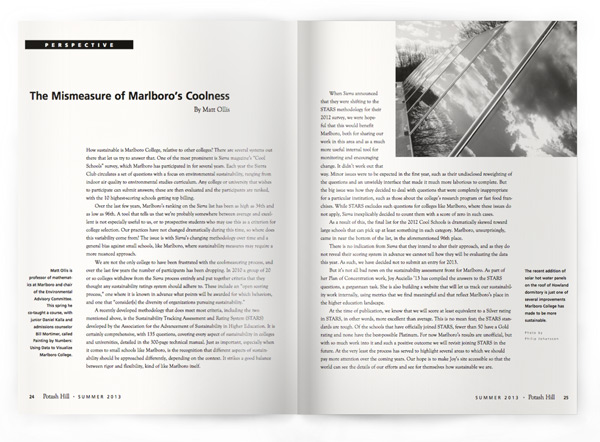
By Matt Ollis
How sustainable is Marlboro College, relative to other colleges? There are several systems out there that let us try to answer that. One of the most prominent is Sierra magazine’s “Cool Schools” survey, which Marlboro has participated in for several years. Each year the Sierra Club circulates a set of questions with a focus on environmental sustainability, ranging from indoor air quality to environmental studies curriculum. Any college or university that wishes to participate can submit answers; these are then evaluated and the participants are ranked, with the 10 highest-scoring schools getting top billing.
Over the last few years, Marlboro’s ranking on the Sierra list has been as high as 34th and as low as 96th. A tool that tells us that we’re probably somewhere between average and excellent is not especially useful to us, or to prospective students who may use this as a criterion for college selection. Our practices have not changed dramatically during this time, so where does this variability come from? The issue is with Sierra’s changing methodology over time and a general bias against small schools, like Marlboro, where sustainability measures may require a more nuanced approach.
We are not the only college to have been frustrated with the cool-measuring process, and over the last few years the number of participants has been dropping. In 2010 a group of 20 or so colleges withdrew from the Sierra process entirely and put together criteria that they thought any sustainability ratings system should adhere to. These include an “open scoring process,” one where it is known in advance what points will be awarded for which behaviors, and one that “consider[s] the diversity of organizations pursuing sustainability.”
A recently developed methodology that does meet most criteria, including the two mentioned above, is the Sustainability Tracking Assessment and Rating System (STARS) developed by the Association for the Advancement of Sustainability in Higher Education. It is certainly comprehensive, with 135 questions, covering every aspect of sustainability in colleges and universities, detailed in the 300-page technical manual. Just as important, especially when it comes to small schools like Marlboro, is the recognition that different aspects of sustainability should be approached differently, depending on the context. It strikes a good balance between rigor and flexibility, kind of like Marlboro itself.
When Sierra announced that they were shifting to the STARS methodology for their 2012 survey, we were hopeful that this would benefit Marlboro, both for sharing our work in this area and as a much more useful internal tool for monitoring and encouraging change. It didn’t work out that way. Minor issues were to be expected in the first year, such as their undisclosed reweighting of the questions and an unwieldy interface that made it much more laborious to complete. But the big issue was how they decided to deal with questions that were completely inappropriate for a particular institution, such as those about the college’s research program or fast food franchises. While STARS excludes such questions for colleges like Marlboro, where these issues do not apply, Sierra inexplicably decided to count them with a score of zero in such cases.
As a result of this, the final list for the 2012 Cool Schools is dramatically skewed toward large schools that can pick up at least something in each category. Marlboro, unsurprisingly, came in near the bottom of the list, in the aforementioned 96th place.
There is no indication from Sierra that they intend to alter their approach, and as they do not reveal their scoring system in advance we cannot tell how they will be evaluating the data this year. As such, we have decided not to submit an entry for 2013.
But it’s not all bad news on the sustainability assessment front for Marlboro. As part of her Plan of Concentration work, Joy Auciello ’13 has compiled the answers to the STARS questions, a gargantuan task. She is also building a website that will let us track our sustainability work internally, using metrics that we find meaningful and that reflect Marlboro’s place in the higher education landscape.
At the time of publication, we know that we will score at least equivalent to a Silver rating in STARS, in other words, more excellent than average. This is no mean feat; the STARS standards are tough. Of the schools that have officially joined STARS, fewer than 50 have a Gold rating and none have the best-possible Platinum. For now Marlboro’s results are unofficial, but with so much work into it and such a positive outcome we will revisit joining STARS in the future. At the very least the process has served to highlight several areas to which we should pay more attention over the coming years. Our hope is to make Joy’s site accessible so that the world can see the details of our efforts and see for themselves how sustainable we are.
Matt Ollis is professor of mathematics at Marlboro and chair of the Environmental Advisory Committee. This spring he co-taught a course, with junior Daniel Kalla and admissions counselor Bill Mortimer, called Painting by Numbers: Using Data to Visualize Marlboro College.
On and Off the Hill
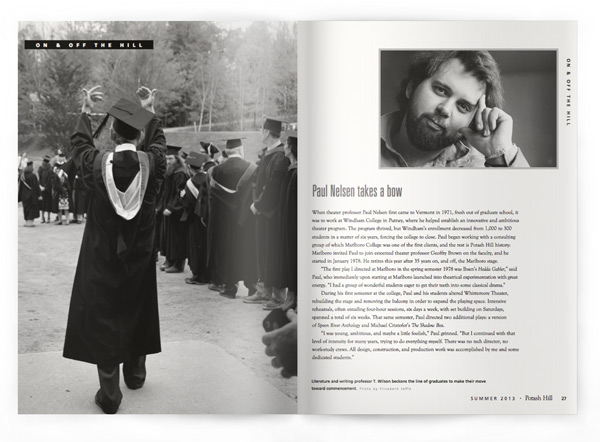
Students in Costa Rica, Paul Nelsen in London, Jason Beaubien in Nigeria, sensitive fernes in "the meadow," Northern Borders in the Latchis Theater, salamander eggs in the woods, and seedlings in the greenhouse. You never know what you will find on and off the hill, but it is sure to edify.
Literature and writing professor T. Wilson (above) beckons the line of graduates to make their move toward commencement. Photo by Elisabeth Joffe
Paul Nelsen takes a bow
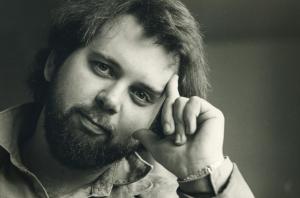 When theater professor Paul Nelsen first came to Vermont in 1971, fresh out of graduate school, it was to work at Windham College in Putney, where he helped establish an innovative and ambitious theater program. The program thrived, but Windham’s enrollment decreased from 1,000 to 300 students in a matter of six years, forcing the college to close. Paul began working with a consulting group of which Marlboro College was one of the first clients, and the rest is Potash Hill history: Marlboro invited Paul to join esteemed theater professor Geoffry Brown on the faculty, and he started in January 1978. He retires this year after 35 years on, and off, the Marlboro stage.
When theater professor Paul Nelsen first came to Vermont in 1971, fresh out of graduate school, it was to work at Windham College in Putney, where he helped establish an innovative and ambitious theater program. The program thrived, but Windham’s enrollment decreased from 1,000 to 300 students in a matter of six years, forcing the college to close. Paul began working with a consulting group of which Marlboro College was one of the first clients, and the rest is Potash Hill history: Marlboro invited Paul to join esteemed theater professor Geoffry Brown on the faculty, and he started in January 1978. He retires this year after 35 years on, and off, the Marlboro stage.
“The first play I directed at Marlboro in the spring semester 1978 was Ibsen’s Hedda Gabler,” said Paul, who immediately upon starting at Marlboro launched into theatrical experimentation with great energy. “I had a group of wonderful students eager to get their teeth into some classical drama.”
During his first semester at the college, Paul and his students altered Whittemore Theater, rebuilding the stage and removing the balcony in order to expand the playing space. Intensive rehearsals, often entailing four-hour sessions, six days a week, with set building on Saturdays, spanned a total of six weeks. That same semester, Paul directed two additional plays: a version of Spoon River Anthology and Michael Cristofer’s The Shadow Box.
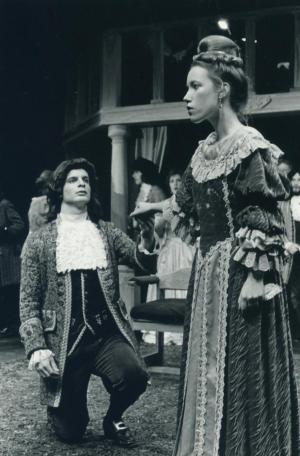 “I was young, ambitious, and maybe a little foolish,” Paul grinned. “But I continued with that level of intensity for many years, trying to do everything myself. There was no tech director, no work-study crews. All design, construction, and production work was accomplished by me and some dedicated students.”
“I was young, ambitious, and maybe a little foolish,” Paul grinned. “But I continued with that level of intensity for many years, trying to do everything myself. There was no tech director, no work-study crews. All design, construction, and production work was accomplished by me and some dedicated students.”
In 1979, during the January “Winterim”—a period designed for students to explore new horizons—Paul, along with his wife, kids, and mother-in-law, led a student trip to London, the world’s mecca for theater. The program proved so successful that he repeated it a couple of years later, and subsequently expanded participation to include Marlboro College trustees, other faculty, and friends of the college from the local community. Paul’s trips to London have continued on a regular basis to this day: what began with 11 students and Paul’s family has grown to three trips a year, with over 120 participants from across North America.
“Paul was an excellent leader on our trip to Britain—heavenly days of castles, cathedrals, contemporary theater, and Shakespeare out the wazoo,” commented Gina DeAngelis ’94. “He didn’t just teach acting or directing, he taught us theater folks how to use our talent and develop our skills to reflect, for an audience, life itself.”
In 1983, inspired by his London experiences, Paul invited a former member of the Royal Shakespeare Company, Ted Valentine, to play the lead role in King Lear. The production involved a yearlong immersion process, with a weekly close reading of the play in the fall semester and rehearsals beginning in the Winterim, and featured students as well as members of the community.
“It was an immense project,” recalled Paul. “Three quarters of the auditorium at Persons was the stage. There were only a hundred or so seats at the back of the auditorium. It was an immense space with giant stone arches.”
The following year Paul worked on Sophocles’ Antigone and a Harold Pinter play, The Birthday Party. These high-profile projects required Paul to raise money, some of which came out of his own pocket. Paul was selfreportedly obsessed with achieving something that was exceptional, beyond standard intercollegiate quality. With a lack of technical infrastructure and reliable financial support, however, he became unable to sustain the energy for such an ambitious program.
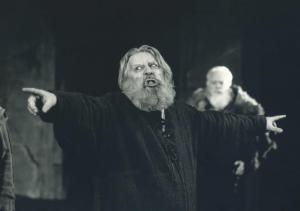 “At first, when I started, it was possible to get by—perhaps by sheer mania, but I cannot say I regret that,” Paul joked. “The theater program has changed over the years. When I first came here, there was an emphasis on performance as a medium for learning. In the first 15 years I was here, I directed 28 productions. Students collaborated actively in the design and production aspects, but like Geoff Brown before me I was involved hands-on with all elements of putting on the shows—as well as teaching a full load of classes and tutorials.”
“At first, when I started, it was possible to get by—perhaps by sheer mania, but I cannot say I regret that,” Paul joked. “The theater program has changed over the years. When I first came here, there was an emphasis on performance as a medium for learning. In the first 15 years I was here, I directed 28 productions. Students collaborated actively in the design and production aspects, but like Geoff Brown before me I was involved hands-on with all elements of putting on the shows—as well as teaching a full load of classes and tutorials.”
In 1985, Paul sought to expand Marlboro’s capabilities by helping a group of local citizens purchase the former arts building at Windham College, which they renamed the River Valley Playhouse and Art Center. The project aimed to collaborate with Middlebury and Smith colleges to develop a summer theater program with professional actors, students, and faculty from all three institutions and produce a summer season of three or four plays. Concerned about the economic prospects and under financial stress, Marlboro pulled out of the project before its launch. Paul adjusted, using community actors to deliver a season of plays: Chekhov’s The Seagull, Good by C.P. Taylor, and Noël Coward’s Present Laughter. “They were artistically successful, and ticket sales covered all expenses,” Paul remarked with a smile.
Over the next decade, Paul continued to support student productions but decreased the frequency of his own. In 1996, he directed his final play, Shakespeare’s Twelfth Night, and began to focus his teaching on dramatic literature as well as on exploring the history and practices of theater and film from diverse angles, often in collaboration with other faculty.
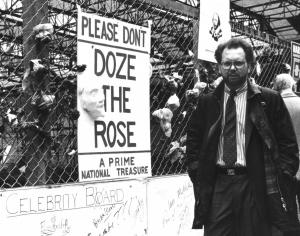 “The impressive works produced by Marlboro students are the greatest testaments to Paul’s ability to nurture and inspire,” declared Edward Isser, professor and chair of theater at Holy Cross College. “Possessing an encyclopedic knowledge of theater and a generosity of spirit, Paul has been a remarkable teacher, a treasured colleague, and a transformative mentor.”
“The impressive works produced by Marlboro students are the greatest testaments to Paul’s ability to nurture and inspire,” declared Edward Isser, professor and chair of theater at Holy Cross College. “Possessing an encyclopedic knowledge of theater and a generosity of spirit, Paul has been a remarkable teacher, a treasured colleague, and a transformative mentor.”
“One of the reasons I chose Marlboro College was so that I would have professors who really cared about, and interacted with, their students,” said Jesse Nesser ’13. “Paul Nelsen turned out to be exactly the kind of teacher I had hoped for. His curiosity, passion, insight, and dedication extend beyond his department and his classroom.”
In the mid-1990s, Paul was one of a dozen National Endowment for the Humanities Fellows who convened at the Folger Shakespeare Institute in Washington, D.C., to explore practices of teaching Shakespeare through performance. His research and publications in academic journals on Early Modern English playhouses resulted in an invitation to serve from 1990 to 2002 on the Academic Advisory Board for the reconstruction of Shakespeare’s Globe Theatre in London.
In 2007 Paul collaborated with visual art professor Tim Segar and music professor Stan Charkey to create a field-based, summer “interarts” intensive encompassing eight weeks of seminars and experiential encounters. This included live performances of theater and dance, numerous concerts, and diverse exhibitions of visual art.
“We got as far west as Cooperstown, New York, to the Glimmerglass Opera, the New York City Ballet at Saratoga, the Williamstown Theater for a few shows, some dance festivals around the area, and ended with our wonderful own Marlboro Music Festival right here,” Paul explained. As if that was not enough, the group stayed in London for another three weeks, following the same model.
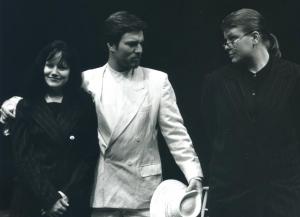 Not at all coincidentally, one of Paul’s final courses in spring 2013, titled Happy Endings, was an exploration of ways in which different kinds of plays and films arrive at closure.
Not at all coincidentally, one of Paul’s final courses in spring 2013, titled Happy Endings, was an exploration of ways in which different kinds of plays and films arrive at closure.
“Only Paul would choose to end his Marlboro career with a course on Happy Endings,” remarked Dana Howell, professor of cultural history. “The class offers his students—as always—his enormous range of knowledge of theater and film, along with his critical insights and his open-ended curiosity about new ways of telling a story through performance.”
His own closure at Marlboro is made much easier by the many retirement projects that await him at home.
“In many ways an academic life is a wonderful rehearsal period for retirement. I can look at it as if it is a very long sabbatical,” Paul quipped. “I will continue to conduct my London seminars, three of which I will lead in 2013, possibly four in 2014—interest among participants keeps growing. I have boxes full of research for two book projects, and a number of essays that I may return to.”
“Paul has contributed both breadth and depth to the whole college in several ways,” remarked Tim Little, retired history professor. “He sees the theater as a powerful force in the intellectual world, both to the performers and their supporters and to the audiences that observe them.”
Never at a loss for eloquent words, Paul waxed modest regarding his hopes for the future of theater at Marlboro.
“The best thing for me to do is leave it behind to allow others to reinvent theater at Marlboro in their own vision,” he stated. “We can create a program of excellence where theater, dance, film, music, and visual arts begin to see themselves not as isolated fields of study but as ‘liberal’ investigations of shared interests, creatively and continuously pursuing the joy and dignity of learning.” —Christian Lampart ’16
Students take TESOL to Costa Rica
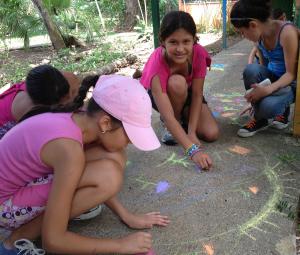 Southern Vermont is remarkable in so many ways, but having large numbers of people learning English as a second language is not one of them. It was imperative for the students in the TESOL (teaching English to speakers of other languages) Certificate teaching practicum, which involves six hours of observed classroom teaching, to find some. Fortunately Mary Scholl, TESOL instructor at the Marlboro College Center for Graduate and Professional Studies, is also director of Centro Espiral Mana, a language school and teacher training organization in Costa Rica.
Southern Vermont is remarkable in so many ways, but having large numbers of people learning English as a second language is not one of them. It was imperative for the students in the TESOL (teaching English to speakers of other languages) Certificate teaching practicum, which involves six hours of observed classroom teaching, to find some. Fortunately Mary Scholl, TESOL instructor at the Marlboro College Center for Graduate and Professional Studies, is also director of Centro Espiral Mana, a language school and teacher training organization in Costa Rica.
“We wanted to provide an authentic teaching experience where Marlboro students had to respond to the language-learning needs of students from a different linguistic and cultural background,” said Beverley Burkett, director of the TESOL graduate program and instructor for the TESOL Certificate. Twelve students went to Centro Espiral Mana with Beverley during spring break for eight intense days of preparation and teaching.
The Marlboro students took a project-based approach to lesson planning and design that involved using English to learn about and protect the local environment. In particular they focused on the nature and environmental issues associated with a trail along the local river that had been developed by town government to promote awareness and conservation.
“We were excited about not only teaching English but also contributing to increased environmental awareness and sustainable job opportunities for local inhabitants,” said Bev. “One local teenager said, ‘We learned English, but most of all we learned how to look after our river.’”
“When we first arrived, our students knew a few phrases, but they mostly knew isolated vocabulary,” said sophomore Louisa Jenness. “We worked a lot on forming sentences. Hearing our students start to express themselves for the first time was a beautiful thing.”
Junior Ben Glatt said, “For me, the highlight of the trip were those moments standing in front of the students when they really got it. That joy of discovery was amazing both to witness and to be a part of.”
“The Marlboro TESOL students worked together in cohesive groups and never missed a beat in a very tight schedule of work. I was really proud of them,” said Bev. “One student said he had learned that ‘It’s not about me.’ That summed up the miracle that I witnessed— the group shifted from focusing on themselves and their needs to being teachers responsible for the learning of others. Remarkable!”
The trip to Costa Rica was just one of three international trips that brought Marlboro students to new horizons over spring break. Students in a course on Cuban history spent nine days immersed in their subject, joining anthropology professor Carol Hendrickson and American studies professor Kate Ratcliff on a field research trip to Havana. Five other students explored mosques, palaces, and markets in Turkey with art history professor Felicity Ratte and ceramics professor Martina Lantin, part of their course on ceramic tiles in Seljuk and Ottoman architecture.
Speakers bring global issues to Marlboro College
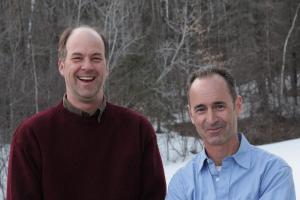 “What I’ve come to realize through the reporting that I do is just how interconnected our world has become, for better or for worse,” said National Public Radio correspondent Jason Beaubien in a Marlboro lecture last April. “And the effects of it are often not what you would expect.”
“What I’ve come to realize through the reporting that I do is just how interconnected our world has become, for better or for worse,” said National Public Radio correspondent Jason Beaubien in a Marlboro lecture last April. “And the effects of it are often not what you would expect.”
In a talk titled “On Wars, Plagues, and Disaster,” Beaubien described traveling to northern Nigeria last fall, to a cluster of tiny villages suffering from lead poisoning at unheard-of levels. More than 400 children had died, and many more were disabled by the poisonous heavy metal, as a result of local gold mining efforts using crude extraction techniques. This environmental disaster, ironically in remote villages that don’t even have electricity, was driven by global markets.
“This disaster wouldn’t have happened if the international price of gold hadn’t gone to incredibly high levels over the last decade,” said Beaubien. Although the gold deposits are marginal, and interlayered with deadly lead, they became profitable enough for miners to make 40 or 50 dollars a day. “The cost of remediation is far greater than any of the profits they have managed to reap.”
Beaubien gave several other examples of the reach of global impacts, from earthquakebroken Haiti to the scourge of tuberculosis in Moldova. Not all of these impacts are negative, as in the case of the campaign to eradicate polio. While there were once hundreds of thousands of polio victims around the world, last year there were only 223 new cases, the lowest in history.
“Polio eradication gets at the great possibilities of what humanity could accomplish around the globe,” said Beaubien.
Other speakers at Marlboro this spring included the inimitable Tim Little, retired history professor and storyteller par excellence, who spoke about the political career of Charles de Gaulle, the “Liberator of Paris.” With his usual wit and whimsy, Tim helped clarify the circumstances of de Gaulle’s rise to power and the conditions of French politics that sustained it until 1970.
Cynthia Enloe, a Clark University professor of political science, also appeared in Ragle in April, presenting a talk titled “Is allowing women soldiers to serve in combat a step toward real liberation?” The presentation traced the growth of militaristic values in the U.S., and pointed out that women serving on the front line was nothing new, much less the result of egalitarian motives.
“Insofar as a country is militarized, women’s exclusion from the military becomes women’s exclusion from public, valued life,” said Enloe.
These three lectures filled out a very full spring of events, which also included readings by renowned poets and fiction writers, dance and theater performances, and of course the regular Music for a Sunday Afternoon concerts.
For details on upcoming events, go to www.marlboro.edu/news/events.
Cultivating the heart of campus
 Last September, many students, staff, and faculty joined together to clear juniper, scrape rock, prepare the soil, and get their hands into the earth planting hundreds of plants on the hill by the admissions building. The result is a welcoming gateway to the college, leading from the visitor’s parking area to the heart of campus. This summer the community is turning its attention to that heart, with a significant landscaping project in the open space between the dining hall and campus center, a focal point for many campus activities.
Last September, many students, staff, and faculty joined together to clear juniper, scrape rock, prepare the soil, and get their hands into the earth planting hundreds of plants on the hill by the admissions building. The result is a welcoming gateway to the college, leading from the visitor’s parking area to the heart of campus. This summer the community is turning its attention to that heart, with a significant landscaping project in the open space between the dining hall and campus center, a focal point for many campus activities.
“The new south bank enhances our sense of place and the kind of place Marlboro College is, with our attention to environmental issues and hands-on learning and exploration,” said William Edelglass, philosophy professor. The redesign of the meadows, as the area behind the dining hall has been called, “will create a more inviting, beautiful, useful, and cohesive heart of the Marlboro campus,” added William.
The project was accomplished with the initiative and support of students, faculty, and staff over the past year and is the second half of a larger landscaping effort funded by a generous donor and led by the Regenerative Design Group (RDG), a permaculture-inspired landscape design firm based in Greenfield, Massachusetts. In the fall semester, professionals from RDG taught a course on the principles of design to regenerate natural and human communities, focusing on the meadows as a class project.
 “Ideas about what we wanted in the meadows were gathered from the community, and initial designs were drawn up,” said William, a member of the Standing Building Committee that oversees campus improvements. “These designs were then presented at Town Meeting and hung on a board in the dining hall to gather feedback and more ideas. The new design responds to the desires of the community.”
“Ideas about what we wanted in the meadows were gathered from the community, and initial designs were drawn up,” said William, a member of the Standing Building Committee that oversees campus improvements. “These designs were then presented at Town Meeting and hung on a board in the dining hall to gather feedback and more ideas. The new design responds to the desires of the community.”
Some of changes were visible as early as April, through a Work Day project to expose the ledge between the dining hall and the OP building, under the direction of Sunny Tappan ’77, receptionist extraordinaire. During the week before commencement, students in a one-credit class learned to implement the design and planted in three areas, installing companion species for apple trees and native rocky outcrop plant communities on the exposed ledge. Larger changes to the meadows started shortly after graduation and will continue through the summer. These include a large level lawn for games and activities, a wildflower meadow, a stage for performances, an outdoor classroom, benches for smaller gatherings or study, and a raised stone fireplace.
According to William, “The design includes a number of different kinds of social areas for various activities, from events for the whole community to more intimate spaces for study and conversation, or solitude.”
College offers guarantees for graduate programs
Beginning with the class of 2013, Marlboro is guaranteeing admission to its Graduate and Professional Studies programs for graduating seniors, within 18 months of commencement, and awarding these students a scholarship equivalent to 50 percent of the tuition. This offer is also being extended to all other alumni for a limited period, ending in February 2015.
“This new program expresses our confidence in and commitment to graduates of Marlboro College,” said President Ellen McCulloch-Lovell in her announcement of the new guarantees. “One of the fundamental tenets of liberal arts education is to spur students on to deeper exploration and greater achievement. As members of the Graduate and Professional Studies programs, students will gain the relevant knowledge and practical skills they need to focus their scholarship further in a particular career path.”
The announcement is just the latest move to cultivate the connection between the two campuses in Marlboro and Brattleboro. Other recent initiatives include offering dual-degree programs that link the undergraduate and graduate trajectories and facilitating joint seminars that draw on the expertise of both faculties and student bodies. For more specific information about graduate and professional studies admission, please contact Joe Heslin at 802-258-9209 or jheslin@gradschool.marlboro.edu.
And More
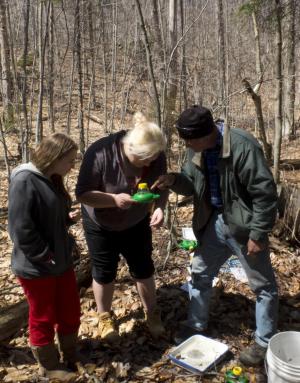 A nature walk to nearby vernal pools was just one of the highlights on campus during the week leading up to Earth Day, April 22. Other happenings included a sustainability fair of campus initiatives, a mini-symposium of environmental projects, therapy goats, and the Wild and Scenic Film Festival, two evenings of new short films on wildlife, conservation, and activism. The festival was presented in coordination with Bonnyvale Environmental Education Center, a local nonprofit, with support from Patagonia.
A nature walk to nearby vernal pools was just one of the highlights on campus during the week leading up to Earth Day, April 22. Other happenings included a sustainability fair of campus initiatives, a mini-symposium of environmental projects, therapy goats, and the Wild and Scenic Film Festival, two evenings of new short films on wildlife, conservation, and activism. The festival was presented in coordination with Bonnyvale Environmental Education Center, a local nonprofit, with support from Patagonia.
 One of the most exciting projects on Work Day this spring was the re-opening of the old bike workshop, which had been occupied by extraneous Outdoor Program gear for years, as a new bike workshop. Writing professor Kyhl Lyndgaard led students in the organization of equipment and refurbishment of some bikes still left in the shop.
One of the most exciting projects on Work Day this spring was the re-opening of the old bike workshop, which had been occupied by extraneous Outdoor Program gear for years, as a new bike workshop. Writing professor Kyhl Lyndgaard led students in the organization of equipment and refurbishment of some bikes still left in the shop.
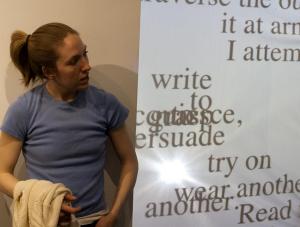 An art show by Catherine Siller, Mellon Teaching Fellow, graced Drury Gallery in March. Titled “Semi Permeable,” the show included a performance work-in-progress that combined movement with responsive digital projections. Catherine brought new horizons in video technology to Marlboro, teaching courses in Digitally Mediated Performance and Digital Studio: Introduction to the Moving Image.
An art show by Catherine Siller, Mellon Teaching Fellow, graced Drury Gallery in March. Titled “Semi Permeable,” the show included a performance work-in-progress that combined movement with responsive digital projections. Catherine brought new horizons in video technology to Marlboro, teaching courses in Digitally Mediated Performance and Digital Studio: Introduction to the Moving Image.
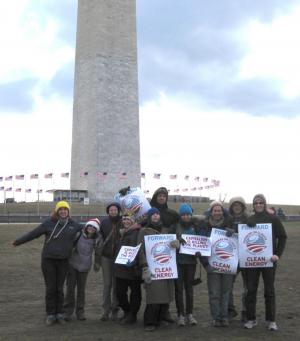 In February, philosophy professor William Edelglass and seven others from Marlboro College joined the crowd of more than 40,000 for the Forward on Climate rally in Washington, D.C.
In February, philosophy professor William Edelglass and seven others from Marlboro College joined the crowd of more than 40,000 for the Forward on Climate rally in Washington, D.C.
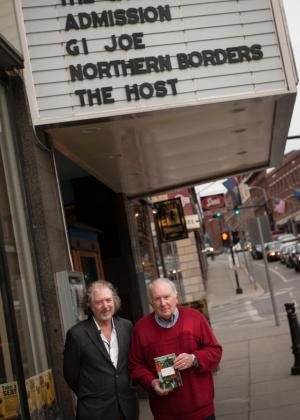 Following nearly two years of planning and preparation, Northern Borders premiered to a sell-out crowd at the Latchis Theatre in Brattleboro. Based on the novel by Frank Howard Mosher, the film was the product of the Movies from Marlboro intensive film semester in spring 2012. Director and film professor Jay Craven is already preparing for another production in spring 2014.
Following nearly two years of planning and preparation, Northern Borders premiered to a sell-out crowd at the Latchis Theatre in Brattleboro. Based on the novel by Frank Howard Mosher, the film was the product of the Movies from Marlboro intensive film semester in spring 2012. Director and film professor Jay Craven is already preparing for another production in spring 2014.
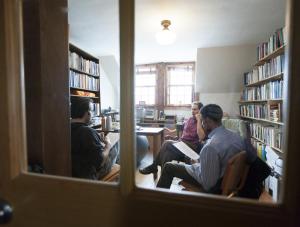 As reported earlier this year at CBS MoneyWatch, a study by the Center for College Affordability and Productivity listed Marlboro College among the “25 colleges with the best professors.” Based on a broad methodology that includes scores found on RateMyProfessors.com, Marlboro ranked 15th among 650 colleges and universities included in the study.
As reported earlier this year at CBS MoneyWatch, a study by the Center for College Affordability and Productivity listed Marlboro College among the “25 colleges with the best professors.” Based on a broad methodology that includes scores found on RateMyProfessors.com, Marlboro ranked 15th among 650 colleges and universities included in the study.
 The introduction of seedling tables and other improvements to the greenhouse (Potash Hill, Winter 2013) assured that this new Marlboro landmark will be a well-utilized community resource for years, thanks to a generous donation from David and trustee Karen Davis, parents of Jacob Davis ’03.
The introduction of seedling tables and other improvements to the greenhouse (Potash Hill, Winter 2013) assured that this new Marlboro landmark will be a well-utilized community resource for years, thanks to a generous donation from David and trustee Karen Davis, parents of Jacob Davis ’03.
Kipling in America
Save the dates for a two-day symposium sponsored by the Kipling Society, October 7 and 8. The first day will take place at Marlboro College, the site of an extensive collection of Rudyard Kipling’s books and other items dating from his stay in the Brattleboro area, from 1882 to 1896. Details and registration at www.kipling.org.uk.
Worthy of note
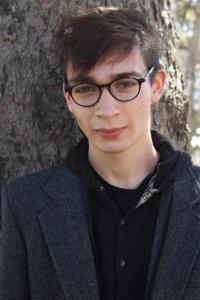 When star marketing writer and freshman Christian Lampart (right, see his article on Paul Nelsen) is not creating powerful press releases or scintillating student profiles, he is interning at the Deerfield Valley News, an independent weekly newspaper out of West Dover, Vermont. “Writing for Deerfield allows me to sculpt my writing to a particular voice and style that encompasses both a Marlboro-esque ease and a journalistic succinctness,” said Christian, who reports on programs and events at the college. “It’s a great opportunity to shed light on an academic environment like Marlboro, for which I truly have a passion, and learn much more about the people I simply ‘see’ here everyday.”
When star marketing writer and freshman Christian Lampart (right, see his article on Paul Nelsen) is not creating powerful press releases or scintillating student profiles, he is interning at the Deerfield Valley News, an independent weekly newspaper out of West Dover, Vermont. “Writing for Deerfield allows me to sculpt my writing to a particular voice and style that encompasses both a Marlboro-esque ease and a journalistic succinctness,” said Christian, who reports on programs and events at the college. “It’s a great opportunity to shed light on an academic environment like Marlboro, for which I truly have a passion, and learn much more about the people I simply ‘see’ here everyday.”
“Instead of translating Buddhist moral thinking into Western categories, scholars will understand Buddhist ethics better if approached on its own terms, an approach that leads to a richer philosophical dialogue,” said philosophy professor William Edelglass. He presented a paper at the Society for Asian and Comparative Philosophy on features of Buddhist ethics shared by Western moral philosophies. The panel was one of two group sessions that he chaired at the American Philosophical Association meetings in San Francisco last March. The other was a panel for the International Association of Environmental Ethics, where he presented a paper on the ways in which morality is embodied in acts of pilgrimage in the Himalayas.
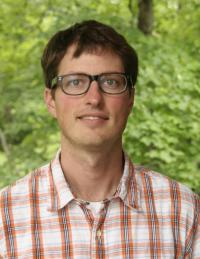 “I had given the composting toilet a pretty serious test drive, and found the throne lacking,” said writing professor Kyhl Lyndgaard (right). His humorous essay on the subject, “Dumping Compost: A Literary Look at Human Waste,” appears in the 20th-anniversary issue of Whole Terrain, the journal of reflective environmental practice published by Antioch University New England. Kyhl also has an essay in the new collection Trash Animals: How We Live with Nature’s Filthy, Feral, Invasive and Unwanted Species (University of Minnesota Press), called “An Unlimited Take of Ugly: The Bullhead Catfish.”
“I had given the composting toilet a pretty serious test drive, and found the throne lacking,” said writing professor Kyhl Lyndgaard (right). His humorous essay on the subject, “Dumping Compost: A Literary Look at Human Waste,” appears in the 20th-anniversary issue of Whole Terrain, the journal of reflective environmental practice published by Antioch University New England. Kyhl also has an essay in the new collection Trash Animals: How We Live with Nature’s Filthy, Feral, Invasive and Unwanted Species (University of Minnesota Press), called “An Unlimited Take of Ugly: The Bullhead Catfish.”
Not one but three Marlboro students in computer science presented posters at the April regional conference of the Consortium for Computing Sciences in Colleges (CCSC), hosted by Siena College in Loudonville, New York. Sam Auciello, whose Plan focused on programming languages, presented a poster about a programming language that compiles to JavaScript, designed for web development. Alex Hiam studied microcontrollers and presented a software library for the BeagleBone, a tiny computer for do-it-yourself electronics. Physics and computing student Chad Daniels created a simulation of an “ideal gas” that runs in a web browser. If you did not understand the last three sentences, consider this one: that’s just three of the five computer science graduates this year, a Marlboro record.
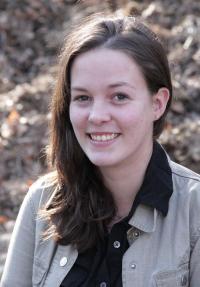 “In the United States, public education has stood apart, physically and philosophically, from the community and society in which it serves,” said senior Maddie Holm (right). “By asking students to participate in other types of learning opportunities, schooling becomes a dynamic process between not just the student and teacher, but the larger community,” Maddie was recognized for her commitment to community with an Engaged Student Award from the Vermont Campus Compact in April. As part of her Plan of Concentration, on the role of community service in education, she talked with students at the local Montessori school about different kinds of community engagement and made ceramic bowls with them for the Empty Bowls Dinner.
“In the United States, public education has stood apart, physically and philosophically, from the community and society in which it serves,” said senior Maddie Holm (right). “By asking students to participate in other types of learning opportunities, schooling becomes a dynamic process between not just the student and teacher, but the larger community,” Maddie was recognized for her commitment to community with an Engaged Student Award from the Vermont Campus Compact in April. As part of her Plan of Concentration, on the role of community service in education, she talked with students at the local Montessori school about different kinds of community engagement and made ceramic bowls with them for the Empty Bowls Dinner.
“We must enlarge and enrich our definition of ‘value’ beyond the purely monetary,” said Ellen McCulloch-Lovell, president, in a March New York Times editorial. “Students must be prepared for a lifetime of engagement, not for specific jobs that may change or even disappear.” Ellen shared her perspective on the civic value of a liberal arts degree in an ongoing series of NYT editorials on higher education. She also published editorials on related topics in Inside Higher Ed in February and the Huffington Post in April. Ellen suggests that college students stand to gain a broad range of skills, like effective communication and problem solving, that are not considered in the race to quantify a “return on investment.”
Art faculty member Tim Segar has had three shows in the past year, including one that marked the grand opening of a new fine arts gallery at Landmark College, in March. Tim’s work in the inaugural exhibit, composed of steam-bent arcs of oak and ash, explored the intersections between sculpture and drawing. Last October Tim had a show with fellow art faculty member Cathy Osman at the Oxbow Gallery, in Northampton, Massachusetts. One of his pieces in that show, called “The Watchtower,” was chosen for the Biennial Regional Juror’s Choice Competition at the Thorne-Sagendorph Art Gallery, at Keene State College.
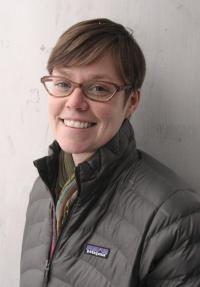 “I really enjoy working with all the creative, flexible, and engaged folks here,” said Amber Hunt (right) reference and technology librarian. Library Journal named Amber as one of 50 librarians who are “movers and shakers” for 2013, citing her efforts to move and shake the college over to using open source systems. Amber led Marlboro to be among the first in the United States to adopt open source software called CUFTS, developed in Canada, to manage its e-journals. “Using open source library software improves our services and budget, and also allows us to participate in a software community that basically uses what academics call a peer-review process to make improvements.”
“I really enjoy working with all the creative, flexible, and engaged folks here,” said Amber Hunt (right) reference and technology librarian. Library Journal named Amber as one of 50 librarians who are “movers and shakers” for 2013, citing her efforts to move and shake the college over to using open source systems. Amber led Marlboro to be among the first in the United States to adopt open source software called CUFTS, developed in Canada, to manage its e-journals. “Using open source library software improves our services and budget, and also allows us to participate in a software community that basically uses what academics call a peer-review process to make improvements.”
Marlboro’s professor of French, Boukary “Abou” Sawadago (below), has had a busy year already, and it’s only summer. In February Abou authored a new book on films from Mali, Cote d’Ivoire, and other West African nations, titled Les Cinémas Francophones Ouest-Africains. “The book is a study of films through the prism of marginality,” said Abou, who came to Marlboro in September. An article about Abou’s own recent documentary film, titled Salut Y’all, was featured in Burkina Faso’s popular news website LeFaso in January. The film, which profiles African educators teaching French in Louisiana, screened in St. Louis in March and Cameroon in April as part of the Africa World Documentary Film Festival.
For the most up-to-date scoop on what’s going on around campus, see:
Potash Phil, Facebook, Youtube, and Twitter.
Commencement 2013
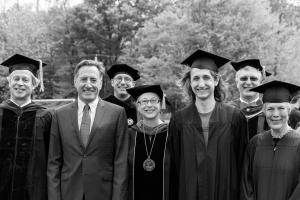 “You’re a group of students who have rejected traditional ways of knowing things,” said Vermont Governor Peter Shumlin in his commencement address on May 19. “Creative, entrepreneurial, motivated, curious—you’re critical thinkers who have said ‘yes’ to a way of learning that only Marlboro offers.” Shumlin told 59 members of the class of 2013 to look for more opportunities to say “yes,” for the betterment of their lives, their communities, and their planet. Senior speaker Evan Lamb compared college to climbing a mountain, and President Ellen McCulloch-Lovell challenged the concept of “return on investment” in higher education (see excerpt). Governor Shumlin and Julie Johnson Kidd, president of the Christian A. Johnson Endeavor Foundation, both received honorary degrees from Marlboro, and outgoing Dean of Students Ken Schneck delivered a poignant rendition of a seventh-grade poem for the valediction.
“You’re a group of students who have rejected traditional ways of knowing things,” said Vermont Governor Peter Shumlin in his commencement address on May 19. “Creative, entrepreneurial, motivated, curious—you’re critical thinkers who have said ‘yes’ to a way of learning that only Marlboro offers.” Shumlin told 59 members of the class of 2013 to look for more opportunities to say “yes,” for the betterment of their lives, their communities, and their planet. Senior speaker Evan Lamb compared college to climbing a mountain, and President Ellen McCulloch-Lovell challenged the concept of “return on investment” in higher education (see excerpt). Governor Shumlin and Julie Johnson Kidd, president of the Christian A. Johnson Endeavor Foundation, both received honorary degrees from Marlboro, and outgoing Dean of Students Ken Schneck delivered a poignant rendition of a seventh-grade poem for the valediction.
From President Ellen McCulloch-Lovell’s address
Now, orals are over, the party barge has set sail, and soon you’ll be clearing out, rolling down the hill to Brattleboro, or leaving us for graduate school, jobs, or a future still to be imagined. What to say about you as a class? Really, you are kind of elusive. Some of you are graduating after being at Marlboro two years, some for six years. You span ages 21 to 63. Two of you are veterans, part of our Marlboro tradition. I heard some of you speak up at Town Meeting, part of the ardent debates on issues from smoking to the pet policy. Maybe you are the policy debate class!
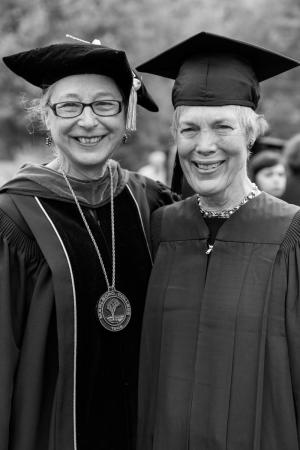 From Evan Lamb’s senior address
From Evan Lamb’s senior address
Right now, I’m standing at the top of my own personal mountain, and it feels like a tiny apotheosis. But the practical, survival-oriented part of my brain knows that the future looms tall in front of me, and to speak frankly, I am terrified of it. Soon I will come to the parts of the world that need fixing, and I will need to find shelter and sustenance to keep going. But I’m anything but alone. And now that I’ve proved myself to myself, now that I’m hearing “I told you so” from those people who once said “you can do it,” the next step isn’t looking so shaky, and I can turn to face the future, look back over my shoulder, and tell all of you in my best action-movie voice, “Let’s do this.”
From the honorary degree citation for Julie Johnson Kidd
You have said, “We must develop an unquenchable curiosity about the world around us, for in that curiosity we find our passions and we find new solutions to seemingly intractable problems.” In the book Declining by Degrees: Higher Education at Risk, where you submit that American higher education has lost its bearings, you say, “Pockets of excellence do exist, particularly amongst the small liberal arts colleges, where some students are transformed and broadened in thrilling ways.” We hope that some of the students you meet today, and their thrilling transformations, embolden your optimism in this regard.
From the honorary degree citation for Governor Peter Shumlin
You have said Vermont could “provide the brainpower, make the products, and seize the job opportunities a lower carbon economy requires.” You were the first sitting governor in the United States to preside over a same-sex wedding ceremony, and probably the first to be nearly mauled by bears, joking that you were within “three feet of getting ‘arrh.’” You are convinced, and have been very convincing, that Vermont can become known nationally as the “education state” in the coming years, asserting that Vermont’s education system is “the state’s greatest economic development tool.”
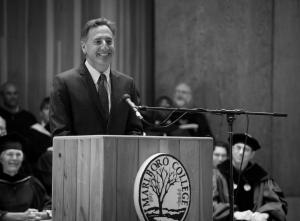 From Governor Shumlin’s address
From Governor Shumlin’s address
When we landed back here in a chopper a couple years ago, the little town of Marlboro had people living in total isolation and despair because 12 inches of rain got dumped on this little community in ways that we’ve never seen before. Whether it’s Irene, or—for those of you from down country—Sandy, or any of the other climate-induced catastrophes, they’re just a little warning, a little teeny window into the future for the class of 2013’s children and grandchildren. We know we can’t move fast enough, and we’ve got to speed it up. But you all have the courage and the vision to define for us a carbon-free future, with the imagination and the power to say “yes” that Marlboro has instilled in you…. There has never been a generation of graduates who had a bigger responsibility and opportunity to say “yes” to “blessed be smallness,” by thinking small while we do big things—because the future of the planet depends on it.
Ken Schneck’s heartwarming valediction can best be appreciated on YouTube .
Academic Prizes
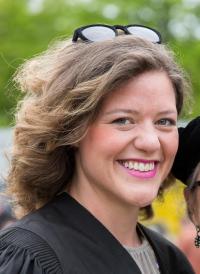 The Rebecca Willow Prize, established in 2008 in memory of Rebecca Willow, class of 1995, is awarded to a student whose presence brings personal integrity and kindness to the community and who unites an interest in human history and culture with a passion for the natural world: Evan Sachs
The Rebecca Willow Prize, established in 2008 in memory of Rebecca Willow, class of 1995, is awarded to a student whose presence brings personal integrity and kindness to the community and who unites an interest in human history and culture with a passion for the natural world: Evan Sachs
The Audrey Alley Gorton Award, given in memory of Audrey Gorton, Marlboro alumna and member of the faculty for 33 years, to the students who best reflect the Gorton qualities of: passion for reading, an independence of critical judgment, fastidious attention to matters of style, and a gift for intelligent conversation: Alexia Boggs, Jesse Nesser
The Hilly van Loon Prize, established by the class of 2000 in honor of Hilly van Loon, Marlboro class of 1962 and staff member for 23 years, is given to the senior who best reflects Hilly’s wisdom, compassion, community involvement, quiet dedication to the spirit of Marlboro College, joy in writing, and celebration of life: Molly Booth
The Ryan Larsen Memorial Prize was established in 2006 in memory of Ryan Jeffrey Larsen, who felt transformed by the opportunities to learn and grow within the embrace of the Marlboro College community. It is awarded annually to juniors or seniors who best reflect Ryan’s qualities of philosophical curiosity, creativity, compassion, and spiritual inquiry: Vivian Gay, Michael Schneeweis
The William Davisson Prize, created by the Town Meeting Selectboard and named in honor of Will Davisson, who served as a faculty member for 18 years and as a trustee for 22 years, is awarded to one or more students for extraordinary contributions to the Marlboro Community: Cora Lively, Elliot Samuel-Lamm
The Sally and Valerio Montanari Theater Prize is awarded annually to a graduating senior who has made the greatest overall contribution to the pursuit of excellence in theater production: Evan Lamb
The Roland W. Boyden Prize is given by the humanities faculty to students who have demonstrated excellence in the humanities. Roland Boyden was a founding faculty member of the college, acting president, dean, and trustee: Amee Latour, Mairaed Delaney, Nikki Haug
The Helen W. Clark Prize, awarded by the visual arts faculty for the best Plans of Concentration in the fine arts: Edward (Ned) White, Tristan (Dirk) Stamm
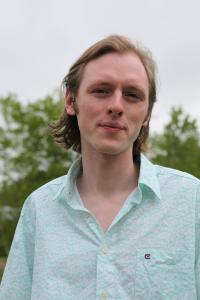 The Dr. Loren C. Bronson Award for Excellence in Classics, established by the family of Loren Bronson, class of 1973, to encourage undergraduate work in classics: Angelique Krohn
The Dr. Loren C. Bronson Award for Excellence in Classics, established by the family of Loren Bronson, class of 1973, to encourage undergraduate work in classics: Angelique Krohn
The Robert E. Engel Award, established in 2011 in honor of Bob Engel, Marlboro faculty member for 36 years, is awarded to a student who demonstrates Bob’s passion for the natural world and his keen powers of observation and inquiry as a natural historian: Eric Dennis
The Freshman/Sophomore Essay Prize, given annually for the best essay written for a Marlboro course. Liza Mitrofanova for her essay “Cancer-Curing Cankers: or, the Mysterious Life of Mycelial Growth.”
The Robert H. MacArthur Prize was established in 1973 in memory of Robert MacArthur, class of 1951, and recently rededicated to Robert and also to John and to John and Robert’s parents, John and Olive MacArthur, who founded the science program at Marlboro College. The contest for the prize is in the form of a question or challenge offered to the entire student community: first prize, Cordelia Fuller; second prize, Felix Jarrar; third prize, Tonifers (a student a cappela group), Kelsa Summer; honorable mention, Fifelo Aganga, Amber Claxton, Dane Fredericks
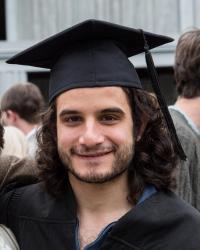 The Buck Turner Prize, awarded to students who demonstrate excellence in the natural sciences, who use interdisciplinary approaches, and who place their work in the context of larger questions: Tristan (Dirk) Stamm, Chad Daniels
The Buck Turner Prize, awarded to students who demonstrate excellence in the natural sciences, who use interdisciplinary approaches, and who place their work in the context of larger questions: Tristan (Dirk) Stamm, Chad Daniels
For full transcripts of addresses, citations, and student Plans of Concentration, as well as photos and videos, go to Commencement 2013 on our website.
Alumni News
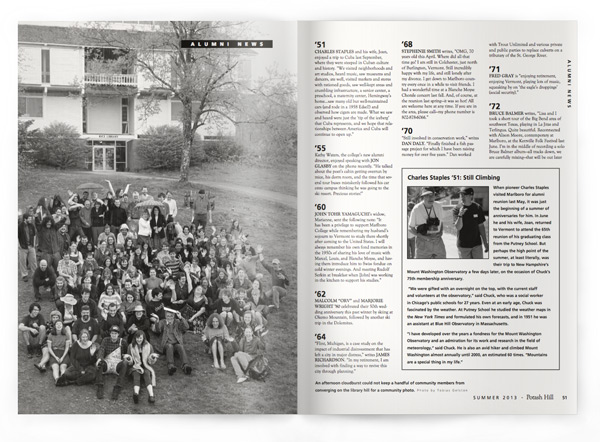
’51
CHARLES STAPLES and his wife, Joan, enjoyed a trip to Cuba last September, where they were steeped in Cuban culture and history. “We visited neighborhoods and art studios, heard music, saw museums and dancers, ate well, visited markets and stores with rationed goods, saw well-kept areas and crumbling infrastructure, a senior center, a preschool, a maternity center, Hemingway’s home…saw many old but well-maintained cars (and rode in a 1958 Edsel!) and observed how cigars are made. What we saw and heard were just the ‘tip of the iceberg’ that Cuba represents, and we hope that relationships between America and Cuba will continue to open up.”
Charles Staples ’51: Still Climbing
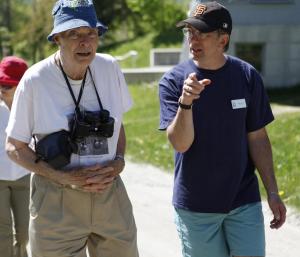 When pioneer Charles Staples visited Marlboro for alumni reunion last May, it was just the beginning of a summer of anniversaries for him. In June he and his wife, Joan, returned to Vermont to attend the 65th reunion of his graduating class from the Putney School. But perhaps the high point of the summer, at least literally, was their trip to New Hampshire’s Mount Washington Observatory a few days later, on the occasion of Chuck’s 75th membership anniversary.
When pioneer Charles Staples visited Marlboro for alumni reunion last May, it was just the beginning of a summer of anniversaries for him. In June he and his wife, Joan, returned to Vermont to attend the 65th reunion of his graduating class from the Putney School. But perhaps the high point of the summer, at least literally, was their trip to New Hampshire’s Mount Washington Observatory a few days later, on the occasion of Chuck’s 75th membership anniversary.
“We were gifted with an overnight on the top, with the current staff and volunteers at the observatory,” said Chuck, who was a social worker in Chicago’s public schools for 27 years. Even at an early age, Chuck was fascinated by the weather. At Putney School he studied the weather maps in the New York Times and formulated his own forecasts, and in 1951 he was an assistant at Blue Hill Observatory in Massachusetts.
“I have developed over the years a fondness for the Mount Washington Observatory and an admiration for its work and research in the field of meteorology,” said Chuck. He is also an avid hiker and climbed Mount Washington almost annually until 2000, an estimated 60 times. “Mountains are a special thing in my life.”
’55
Kathy Waters, the college’s new alumni director, enjoyed speaking with JON GLASBY on the phone recently. “He talked about the poet’s cabin getting overrun by mice, his dorm room, and the time that several tour buses mistakenly followed his car onto campus thinking he was going to the ski resort. Precious stories!”
’60
JOHN TOHR YAMAGUCHI’s widow, Marianne, sent the following note: “It has been a privilege to support Marlboro College while remembering my husband’s sojourn to Vermont to study there shortly after coming to the United States. I will always remember his own fond memories in the 1950s of sharing his love of music with Marcel, Louis, and Blanche Moyse, and having them introduce him to Swiss fondue on cold winter evenings. And meeting Rudolf Serkin at breakfast when [John] was working in the kitchen to support his studies.”
’62
MALCOLM “ORV” and MARJORIE WRIGHT ’80 celebrated their 50th wedding anniversary this past winter by skiing at Okemo Mountain, followed by another ski trip in the Dolomites.
’64
“Flint, Michigan, is a case study on the impact of industrial disinvestment that has left a city in major distress,” writes JAMES RICHARDSON. “In my retirement, I am involved with finding a way to revive this city through planning.”
’68
STEPHENIE SMITH writes, “OMG, 70 years old this April. Where did all that time go? I am still in Colchester, just north of Burlington, Vermont. Still incredibly happy with my life, and still lonely after my divorce. I get down to Marlboro country every once in a while to visit friends. I had a wonderful time at a Blanche Moyse Chorale concert last fall. And, of course, at the reunion last spring—it was so hot! All are welcome here at any time. If you are in the area, please call—my phone number is 802-878-6066.”
New Alumni Books
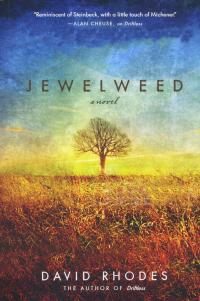 “Writing fiction provides a context in which to explore passions, emotions, and social tensions that would otherwise remain—for me—only superficially understood,” said David Rhodes ’69, author of the recent novel Jewelweed (Milkweed Editions, ISBN 978-1-57131-100-9). “This process of imaginative discovery both enhances my own experience and provides a way to unite with other individuals in a shared human experience.”
“Writing fiction provides a context in which to explore passions, emotions, and social tensions that would otherwise remain—for me—only superficially understood,” said David Rhodes ’69, author of the recent novel Jewelweed (Milkweed Editions, ISBN 978-1-57131-100-9). “This process of imaginative discovery both enhances my own experience and provides a way to unite with other individuals in a shared human experience.”
Following the publication of his last novel, Driftless (see Potash Hill, Summer 2009), Dave was awarded a Guggenheim Fellowship that supported the writing of Jewelweed. His newest novel is set in the same area as Driftless, about half a generation later, with both familiar and new characters struggling to find a sense of belonging in the present moment. Rich with Dave’s sense of empathy and wonder, Jewelweed’s central story concerns a young man returning home after ten years in prison and the ways in which his readjustment to his community affects the many people around him.
Publishers Weekly called Jewelweed “a benevolent sort of rural American magical realism.... profound.”
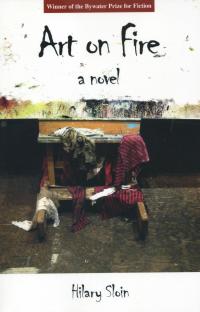 “The one thing that holds true with everything I write—and finish—is that I fall in love with what I am working on, whether it be the story, the place, or the characters. Ideally, all of the above hold sway,” said Hilary Sloin ’85, author of Art on Fire (Bywater Books, ISBN 978-1-61294- 031-1).
“The one thing that holds true with everything I write—and finish—is that I fall in love with what I am working on, whether it be the story, the place, or the characters. Ideally, all of the above hold sway,” said Hilary Sloin ’85, author of Art on Fire (Bywater Books, ISBN 978-1-61294- 031-1).
Art on Fire is the apparent biography of artist Francesca DeSilva, who effortlessly rises to cult figure status, a suit she wears with much discomfort. But in the tradition of Vladimir Nabokov’s Pale Fire, it’s a fiction from start to finish. The book was mistakenly awarded the nonfiction prize in the Amherst Book and Plow Competition, a testament to the success of its artful deception. It also won the Bywater Prize for Fiction and was a finalist for the Heekin Foundation Award, the Dana Awards, and the Story Oaks Prize. “The book is at first glance a coming-of-age story,” said Hilary, “but also adds to the mix 13 essays quoting scholars, critics, and psychologists who deconstruct, analyze, and misconstrue Francesca’s paintings, often to the point of hilarity.”
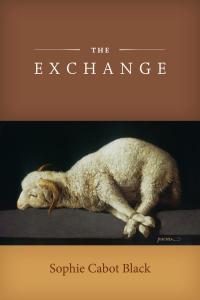 “If I write to be near those I have lost, I also write to survive them. This last book wanted to be about that,” said Sophie Black ’80, who recently published her third book of poems, The Exchange (Graywolf Press, ISBN 978-1-55597-641-5). “Of course it turned into something else, maybe not entirely, but it didn’t go where I thought it would.”
“If I write to be near those I have lost, I also write to survive them. This last book wanted to be about that,” said Sophie Black ’80, who recently published her third book of poems, The Exchange (Graywolf Press, ISBN 978-1-55597-641-5). “Of course it turned into something else, maybe not entirely, but it didn’t go where I thought it would.”
In The Exchange, Sophie explores the surprising interplay between mortality and money, between the next world and this one, and between the language of disease and the language of finance.
“A friend was dying of cancer, the world of commerce and currency fell apart, and all the while I wanted to work in those metaphysical questions that have haunted me from the beginning,” said Sophie. “Hence another collection of poem-cycles, somehow related, puzzled in.”
Following Sophie’s beloved friend through long illness and eventual death, the poems in The Exchange confront loss with stark emotion, even as the outside world—the world of debts paid and collected, of power and dominion—intrudes. Sophie’s poems ask, what is gained and what is sacrificed, and how can those profits and losses be measured, when the currency involved is love?
’70
“Still involved in conservation work,” writes DAN DALY. “Finally finished a fish passage project for which I have been raising money for over five years.” Dan worked with Trout Unlimited and various private and public parties to replace culverts on a tributary of the St. George River.
’71
FRED GRAY is “enjoying retirement, enjoying Vermont, playing lots of music, squeaking by on ‘the eagle’s droppings’ (social security).”
’72
BRUCE BALMER writes, “Lisa and I took a short tour of the Big Bend area of southwest Texas, playing in La Jitas and Terlingua. Quite beautiful. Reconnected with Alison Moore, contemporary at Marlboro, at the Kerrville Folk Festival last June. I’m in the middle of recording a solo Bruce Balmer album—all tracks down, we are carefully mixing—that will be out later this year on Soonasongs.com, the little label that could from Jonesborough, Tennessee. Lisa’s working on a master’s in jazz vocals at UNT Denton. We are envious of snowy weather. ‘Hi’ to anyone who might give a $%!^.”
MICHELLE HOLZAPFEL writes, “As an alumna who lives in the greater Marlboro community, I deeply appreciate the continuing growth in the strong links between the college and the town—when we need each other more than ever. Thank you!”
’73
“Dear Friends,” writes BOB DAUGHTRY, “I remember you with a great deal of affection. I’m currently auditing Tim Segar’s sculpture class—wonderful.”
DAN HUDKINS writes, “While visiting in Chester, Vermont, this winter right before Christmas, took a fall in the bathroom (hell getting old), broke two ribs and punctured a lung. Bad news was, couldn’t fly home to San Jose on Christmas day as planned. Good news, earliest train ticket from Boston to San Jose wasn’t until December 29 so got to spend a few days with my daughter in Jamaica Plain (she’s working for Isis Parenting doing pre- and postnatal education if any of the younger alumni have the need). And I got to spend an evening and night with BARBARA HONTHUMB and RICK CLARE. Train trip was four days and three nights, with New Year’s celebrated somewhere on the Bonneville Salt Flats. Younger daughter graduates from Mount Holyoke in May and is under contract to do a teaching internship at the Chadwick International School in Incheon, South Korea. After having presented at many conferences about technology in education for the past 17 years, a post on a listserv ended up with my actually sitting down and writing something. My article on why everyone should study computer science will be published in the summer issue of Independent School magazine. If anyone, of any class, is passing through San Jose, come on by.”
JON SOUDER is “still living in Coos Bay, Oregon, running the Coos Watershed Association (now going on 13 years). As hard as it might be for some to imagine, I’ll be responsible this summer for 12 permanent employees, a 10-person conservation crew, five VISTA and AmeriCorps members, and a Coho Salmon Field Studies class. Back dabbling in academics: I’ll teach a class called Practical Ecology, and wrote a chapter for Stream and Watershed Restoration, published by Wiley in January. Still married to Norma Kline, and enjoying restoring a 1900 house on our Fawlty Farms estate. Have seen PAM CERSOSIMO frequently over the last couple of years as I’ve gone back to Santa Fe to take care of my parents.”
 “I am truly honored and delighted that the Museum of Fine Arts, Boston, has recently acquired my ceramic sculpture “Nargila Pod” to be part of its permanent contemporary art collection,” writes Ellen Schön ’75. “I am especially grateful since the new MFA Contemporary Art Department has been addressing the shifting boundary between art and craft, deliberately embracing both media within the Linde Family Wing galleries.“
“I am truly honored and delighted that the Museum of Fine Arts, Boston, has recently acquired my ceramic sculpture “Nargila Pod” to be part of its permanent contemporary art collection,” writes Ellen Schön ’75. “I am especially grateful since the new MFA Contemporary Art Department has been addressing the shifting boundary between art and craft, deliberately embracing both media within the Linde Family Wing galleries.“
’77
“So proud to be an alumna of Marlboro,” writes WENDY POMEROY. “Every year the value of my experience there increases. My husband, Deane, ran for state representative here in Maine. He won the election, and now our lives have changed and become even more busy, but certainly interesting. Olivia, our daughter, is 12 and plays a mean fiddle. I am a board member of our local land trust, working on a memorial for the town involving landscaping and sculpture, and spending more time in the studio. I make dinner and beds, too.”
’79
College bookstore manager REBECCA BARTLETT was featured in The College Store magazine in an article about cultivating relationships between college bookstores and alumni. In the article, Becky characterizes Marlboro alumni as “not very affluent and with a wide streak of anti-materialism.”
’80
LORI KIRSTEIN writes, “I’m finally using my acting chops for good, not evil (whatever evil acting chops would be...). I have started a new business called Visionary Video Production, and it supports entrepreneurs in having more focus, authenticity, fun, and money in their work, through all kinds of cool ways and means that I won’t outline here lest I start to sound like a sales-y person, but yes it includes videos, and audios, and being your badass ol’ self, and I’m just jazzed! I continue to sing and have even become a karaoke fan. Last night I put my vocal cords to the test by belting out Janis Joplin’s ‘Piece of My Heart.’ Very gratifying that these young guys across the room were standing there grinning at me, shaking their heads, like, ‘Look at that old lady KICK it!’ Love to all, and thank you from my heart— belatedly—for being a part of my life that continues to inspire and move me all of these years later. Peace and blessings.”
“Still teaching,” writes CARTER SIO. “Our son Dylan is at Temple studying psychology and daughter Emma is here at George School as a sophomore. She is enjoying the thought of being an artist and recently won an award for a found object lamp that she did. I’m off to Vietnam for my fourth time, leading students on a service trip for 20 days. Erin and I look forward to a full summer in Maine with my mother and everyone else who finds their way down our long driveway.”
ANNIE QUEST writes, “Starting in the fall, MATT SKEELE ’79 and I will be working at our jobs as teachers a bit less and will spend more time in our studios making art. Daughter Kora has one more year at Cornell. She spent last fall interning for Patrick Leahy and got to ring in Obama’s second term in D.C. Life in southern Vermont is good...come visit us, friends!”
Rice-Aron Library Reaches Alumni
Many alumni at last year’s reunion were impressed with the growing use of digital technologies and databases at Rice-Aron Library. Now alumni have full access to JSTOR, one of the library’s most popular database providers, from the comfort of their own homes.
“One of the most frequent questions that the library gets from soon-to-be and recent graduates is ‘How much longer will I have access to library databases?’” said Emily Alling, library director. “Up until now, the answer has been ‘shortly after graduation,’ because of our licensing agreement with publishers.”
JSTOR recently announced a new program whereby colleges and universities can add on to their existing subscriptions and provide access to alumni, wherever they may be, and Marlboro jumped at the opportunity. Now alumni can peruse over 100 years of scholarly literature in the humanities, social sciences, and life sciences in PDF full text from anyplace with a live internet connection. All you need to do is visit jstor.marlboro.edu and log in with your Marlboro College username and password. If you don’t have one, or forgot yours, just fill out our form and you’ll be set up before you know it.
’81
GWEN FELDMAN HAALAND writes, “The big news in our family is that our daughter, Shannon Juliana Haaland, is choosing, out of all the possible colleges in the world, to attend Marlboro in the fall of 2013 (if I had actually suggested that she go to my alma mater, she would have probably run the other way). Shannon’s favorite subject has always been writing. She won two writing awards last spring, one in the Sunken Garden Poetry Competition and the second in the Connecticut Young Writers Trust Competition. It was wonderful visiting Marlboro with Shannon this year, and especially nice to eat lunch in the dining hall with my old classmate JENNY RAMSTETTER, now a member of the biology faculty at the college. We were in botany and ecology classes together for four years in the old days, including climbing Mount Mansfield in 1977 to view alpine plants with our enthusiastic biology professor, Bob Engel. Best wishes to all past, present, and future Marlboro College students.”
’82
“Still living in Boulder,” writes LESLIE REESE BROWN. “My husband, Sandy, and I are starting a pick-your-own berry farm, trying to grow blueberries in Colorado—cross your fingers. Moving forward with the kitchen and bath business, learning to paint. Our son is in college at Lewis & Clark in Portland, Oregon. Our daughter is a freshman in high school. Oldest daughter has a 3-year-old—I’m a grandma!”
FEDERICO MUCHNIK writes, “Recently completed my first feature length narrative film, This Killing Business, which showed at the Boston International Film Festival on April 19 at the Loews AMC Boston Common. In other news, my daughter Layla is a sophomore at Skidmore and is going into art history and criticism. I have a significant other, Katherine, who has two great kids. She played Carnegie Hall in March. Keyboards. Bach. St. Matthew Passion. Orchestra of St. Luke’s. I run a production company called Mighty Visual Productions, based in Boston.”
’88
RENEE OUBRE is co-author with Gerald L. Halligan of the forthcoming book Knox Farm State Park. The book is in Arcadia Publishing’s Images of America series, and presents a historic tour of the 633-acre farm nestled in the heart of East Aurora, New York.
PETE “COLT” MADDEN is heading up the renewable energy group for Plum Creek Timber and living near Athens, Georgia. “This spring doing the college tour circuit with my eldest son, Daniel,” he writes.
’90
“Maple,” a story by BRETT STANCIU, appeared in the Winter 2012 issue of Taproot magazine.
’93
CHRIS DAVEY writes, “In the last 18 months, Letrisa and I sold our house and veterinary practice in Oklahoma, moved to Connecticut, and opened a new practice, Connecticut Feline Medicine and Surgery (ctFeline.com). If you have a cat in central Connecticut, look us up. We now live in the delightful small town of Bolton, where our daughter, Alex, started kindergarten last fall (after two years of Montessori preschool, her daily complaint about the new school has been ‘too easy’). My freelance editing business is keeping me busier than ever. Recent copyediting projects include exhibition catalogues for major retrospectives on Cristina Iglesias and Hans Haacke at Madrid’s Museo Nacional Centro de Arte Reina Sofía; a special issue of the journal Grey Room on the films of Guy Debord; a policy paper on science and engineering research by the American Academy of Arts and Sciences; and articles on alternative reality games, U.S. scientists’ Cold War responses to Lysenkoism, and Ian Fleming’s connections to the CIA.”
’94
LARA BETH HENRICK is “currently working with big cats at Carolina Tiger Rescue, an accredited sanctuary in Pittsboro, North Carolina. I hope to continue sanctuary work, as I will graduate from a Vet Tech program and take the VTNE after externship this year.”
Marlboro Welcomes New Alumni Director
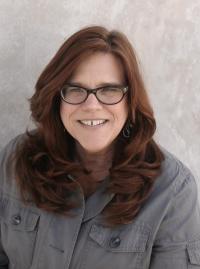 “I feel an immediate and deep connection to this college,” said Kathy Waters, who joined Marlboro as alumni director in April. “It is a community that resonates with who I am as a professional and as a human being.”
“I feel an immediate and deep connection to this college,” said Kathy Waters, who joined Marlboro as alumni director in April. “It is a community that resonates with who I am as a professional and as a human being.”
Kathy, who comes to Marlboro with more than 30 years of experience in human services and advocacy work, has often taken unconventional paths much like those followed by Marlboro alumni. Over the years she has worked in diverse programs with Girl Scouts, people with disabilities, people with drug and alcohol addictions, and youth living in difficult circumstances, from the South Bronx to the Navajo Nation. Most recently Kathy worked with teenage mothers in New York City before relocating to Brattleboro about four years ago to work at Youth Services, a local nonprofit supporting young people and their families.
Kathy has already been impressed with the “dedication and passion of past, present, and future people discerning enough to choose such a place as Marlboro College.” Kathy can be reached at 802-451-7145 or kwaters@marlboro.edu.
’96
ELI FISHMAN and his wife, Laura, welcomed their son, Collin Alexander, in October.
ROB HARDIN’s second child was about to be born in April when he wrote, “We are excited to see our family grow.”
“Finishing up on the Ricki Lake show,” writes ERIN PETERS. “Still in California. Went to Disneyland for the first time—got run over by strollers!”
’98
“Still working as a reporter and photographer at the Winsted Journal, a newspaper in Winsted, Connecticut,” writes SHAW ISRAEL IZIKSON. “I have a new website up with a portfolio of my work at shawisraelizikson.info. Still bumping into a lot of folks from back in the day at the Facebook alumni group I lead at facebook.com/groups/marlborocollegealumni/.”
DAVID and ALLISON ’06 WILLIAMSON “were happy to celebrate our son Porter’s second birthday in April with a gang of Marlboro folks. The house was filled with past, future, and present students and two professors.”
’99
CLAIRE RAPER is busy and happy in upstate New York. She is the proud mother of Lily, 7, and Oliver, 4, who are both tremendous people and doing wonderfully. She is married to Kevin Raper, who is also doing well in television and film as a graphics designer and is now a licensed pilot to boot. Claire is the owner of Kid Around, a children’s store in Saugerties, and the drama teacher at her children’s school. “The upcoming year promises to be full and exciting, but we’re hoping to have a few trips and breaks at the same time.” Anytime any of her fellow Marlboro-ites are in the area, Claire would love to treat them to a hot beverage of their choice and some time catching up.
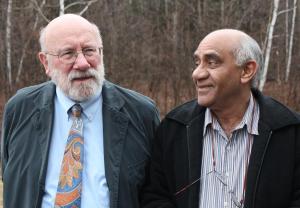 Javed Chaudhri ’65 (right), shown here with classmate and retired history professor Tim Little ’65, joined campus this fall to teach a course about the history of conflicts between Afghanistan, Pakistan, and India.
Javed Chaudhri ’65 (right), shown here with classmate and retired history professor Tim Little ’65, joined campus this fall to teach a course about the history of conflicts between Afghanistan, Pakistan, and India.
’00
KATHLEEN PACKARD writes, “On October 16, 2012, we had our second baby girl, Farryn Gray Packard Vestal, born at our home in Keene, New Hampshire. Avery Elizabeth Packard Vestal, 3, loves being a big sister.” KERMIT WOODS is working on a film about chickens. Check it out at vimeo.com/41158112.
’02
TIM COLLINS writes, “My solo show, On The Outskirts Of Everything (which I debuted at Marlboro in 2011), won the Best Dramatic Script award in the 2012 United Solo Theater Festival, the ‘world’s largest solo theater festival.’ It also had a three-week run at Stage Left Studio in New York City in March of 2013. The play will be published on www.indietheaternow.com.”
MEGAN HAMILTON writes, “After a year teaching English in South Korea, I’m heading to Taipei, Taiwan, in August to teach and hopefully learn some Mandarin.”
ANDREW SANDLIN is doing web design at Malcolm Grear Designs in Rhode Island.
’03
LEE COLLYER is “managing a non-public school/day-treatment program for emotionally disturbed children in Oakland, California. My wife, Kelly, and I welcomed our second daughter, Georgia Bird Collyer, into the world in December 2012. It has been 10 years, and I still miss Vermont all the time, but the Bay Area continues to be a wonderful adopted home.”
GRAHAM FOX is in Cleveland working at Whitney Stained Glass. “I’m restoring amazing glasswork and improving my own,” he writes.
AVI ZOLLMAN is the director of communications at the Jewish Funders Network.
’04
“Still at Keene State College working as a recycling coordinator,” writes HEATHER GREENWOOD. “The work is challenging in many different ways, I have an incredible staff, and I get snow days off.”
’07
“Hi Marlboro,” writes WILLOW O’FERAL. “After working as set photographer on Jay Craven’s Movies at Marlboro feature film last winter, I moved to New York City, where there is a really vibrant Marlboro community. I see BRAD HECK ‘02, AMANDA WILDER, MICHELLE MONTALBANO, and DAVE GOLANN on a daily or weekly basis. Last week I attended a reading where MAGGIE JONES read her excellent fiction (attended as well by a charming though highly caffeinated JOHN THORSON), and MARC PILARO ’03 lives two blocks away from me. His baby boy is unbearably mischievous and adorable. When I moved to Brooklyn in May, I joined an all-women’s samba-reggae percussion band, Batala NYC, and we opened for the Rolling Stones on their 50th anniversary tour! Aside from playing for the Stones, I’ve been picking up photo/film jobs, bartending, interning with a fashion photographer, and generally mucking about in the urban jungle. You can see my work here: www.snippetproductions.com.”
TESSA WALKER defended her master’s thesis on skateboarding as transportation this spring, and she’s currently writing up the study data into something useful for policymakers and skating advocacy groups. She’s working at the Portland (Oregon) Bureau of Transportation as a Senator Hatfield Civic Leadership Fellow.
’08
ANUSHKA PERES, we learned in a note from her parents, is on her way to the University of Arizona to study rhetoric and teaching English.
In his second year as an AmeriCorps VISTA volunteer, RYAN REEVES is coordinator of the Harvest Kitchen youth and job-training program for Farm Fresh Rhode Island. Working in collaboration with chefs, volunteers, and returning graduates, Ryan trains youth who are under the care of the Rhode Island Department of Youth and Families in culinary, sales, and life skills. “My day to day is never the same, and that is why I love it. I spend time talking with farmers, ordering produce, buying kitchen equipment, writing recipes, coordinating our online and retail sales, managing farmers’ markets, keeping inventory, cooking, and teaching. I interact directly with trainees in the hectic atmosphere that is created when you put ten 16- to 18-year-olds in a kitchen with 200 pounds of apples, boiling vats, a beat-up clock radio, and a bunch of knives.” Ryan will be a fulltime employee of Farm Fresh Rhode Island in August.
’09
HEATHER COLLINS is teaching 9th- and 10th-grade English at the Ray Street School, a new alternative school in Hillsborough, North Carolina.
“I’m currently a PATH homeless outreach worker and functional support staff in Derry, New Hampshire,” writes SCOTT CROCKER. “I help house 58 severely mentally ill homeless individuals and have provided services to upwards of 200 homeless individuals over my year and a half in the field.”
SAM LOWENTHAL is in Wyoming, “working as a kayak instructor in the summers and a chairlift operator in the winters, as well as trying to start a permaculture design business. You know, using both what I studied for Plan and what I learned at the OP.”
Joshua “Petey” Petersen ’12: A Film Within a Film
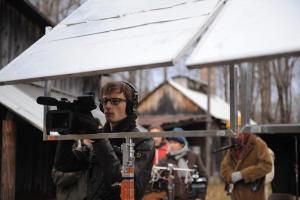 The April premier of Northern Borders was only the end result of last year’s Movies from Marlboro program. The remarkable process of this semester-long collaboration was recorded by Petey Peterson, who produced the half-hour documentary Making Northern Borders.
The April premier of Northern Borders was only the end result of last year’s Movies from Marlboro program. The remarkable process of this semester-long collaboration was recorded by Petey Peterson, who produced the half-hour documentary Making Northern Borders.
“In order to complete the project, a major component of my Plan of Concentration, I shot over 80 hours of behind-the-scenes footage, and edited the film together over three months,” said Petey. He also worked diligently to raise funding for Northern Borders by crafting a Kickstarter campaign with the footage he acquired, which generated $13,000 in donations.
Since graduating in December, Petey has kept himself busy in the film and fashion industries in New York, working in narrative films, music videos, and fashion photography. He is also the creative director at Universal Models for Peace, an organization wielding the marketing power of the fashion industry to encourage global change on issues of women’s rights, poverty, nuclear disarmament, and public health.
“I can only hope that wading through a Vermont mud season last spring, with camera equipment and sleep-deprived cohorts, will have prepared me for what’s ahead,” said Petey.
’10
SARAH HOROWITZ is currently finishing up her master’s degree in art history at the University of Massachusetts Amherst. She presented a paper at the American Association of Italian Studies Conference in Eugene, Oregon, in April entitled “Imagining the Real and the Ideal: Nicolas Poussin’s Rebekah Quenching the Thirst of Eliezer at the Well,” which examines the conflation of architectural and landscape space in one of the artist’s early landscape paintings, executed in Rome. After graduation, she hopes to find a job in the museum or academic world. She and BENJAMIN MARTIN ’09 recently got engaged and look forward to the next chapter of their life together. Ben currently works as a film and video post-production professional in Burlington, Vermont.
WILL JENKINS is “receiving my M.A. in May 2013. Hoping to move to Prague full time in fall 2014—hopefully with Ph.D. candidacy in hand!”
“I’m almost done with my first year in a mental health counseling program at the University of Vermont,” says OLIVIA SANDERS. “I’m also a teaching assistant for an undergrad class on theories of human development and starting my clinical internship with a DBT program next year. Life is busy, but it’s really exciting to be doing what I love and learning so much about social justice in counseling.”
EVAN TAYLOR writes, “I thought I would let you know that I just had two feature articles published in Z Magazine (March and April 2013), based partly on my Plan of Concentration. I remember starting the articles three years ago in Dalrymple tutorials with Jerry Levy and Lynette Rummel, and now they are on a magazine cover in Barnes and Noble. I wonder how much other publishable material is sitting in the Plan room right now.” Based on his experiences in graduate school, says Evan, “It has been confirmed that Marlboro kids are smarter. Otherwise, I am a master’s student at American University in D.C., studying history and hanging out with other Marlboro-ites DREW TANABE ’12 and JOHN BERRY ’07.”
’11
“I am currently serving as an AmeriCorps VISTA volunteer at the In-Sight Photography Project in Brattleboro, Vermont,” writes RYAN STRATTON. “In-Sight is a youth-focused arts education organization that teaches analog and digital photography to kids, from age 11 through 18. Because classes are offered on a sliding-scale basis, In-Sight is able to reach youth that might otherwise not be able to access after-school programming, especially arts education programs. My favorite thing about my service at In-Sight would certainly be the opportunity I have to work with students directly and see the impact that the program has on them. Interacting with the students is always a nice break from work that often requires a lot of time spent with a computer. Sometimes, I get to hear kids say really funny things.”
’12
KATHRYN TRAHAN is also an AmeriCorps VISTA volunteer, serving with the Franklin Grand Isle Bookmobile, a nonprofit mobile library serving rural communities in northern Vermont. “The Bookmobile fights poverty by making books fun and accessible,” states Katie. “In this part of rural Vermont it is not always easy for child care providers to go to a library and check out books for their kids.”
Former Faculty
GEOFFRY BROWN continues to “turn out scripts in my Quintessential Americans series. I performed one on Henry Flager this winter in Fort Lauderdale. Other recent scripts include Ethan Allen, Edna St. Vincent Millay, and Joe Pappa. Anyone interested in performing one?”
Letters
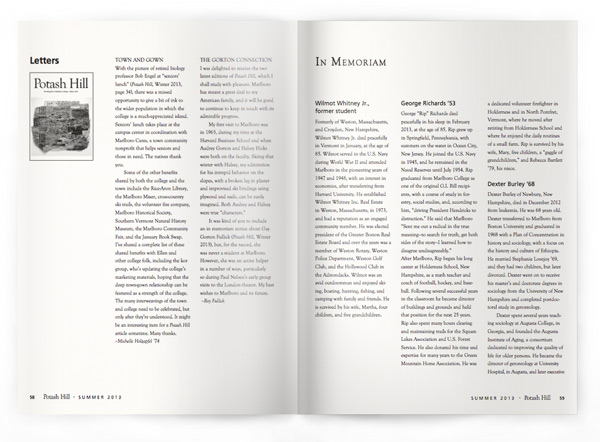
Town and Gown
With the picture of retired biology professor Bob Engel at “seniors’ lunch” (Potash Hill, Winter 2013), there was a missed opportunity to give a bit of ink to the wider population in which the college is a much-appreciated island. Seniors’ lunch takes place at the campus center in coordination with Marlboro Cares, a town community nonprofit that helps seniors and those in need. The natives thank you.
Some of the other benefits shared by both the college and the town include the Rice-Aron Library, the Marlboro Mixer, cross-country ski trails, the volunteer fire company, Marlboro Historical Society, Southern Vermont Natural History Museum, the Marlboro Community Fair, and the January Book Swap. I’ve shared a complete list of these shared benefits with Ellen and other college folk, including the kor group, who’s updating the college’s marketing materials, hoping that the deep town-gown relationship can be featured as a strength of the college. The many interweavings of the town and college need to be celebrated, but only after they’re understood. It might be an interesting item for a Potash Hill article sometime. Many thanks.
—Michelle Holzapfel ’74
The Gorton Connection
I was delighted to receive the two latest editions of Potash Hill, which I shall study with pleasure. Marlboro has meant a great deal to my American family, and it will be good to continue to keep in touch with its admirable progress.
My first visit to Marlboro was in 1963, during my time at the Harvard Business School and when Audrey Gorton and Halsey Hicks were both on the faculty. Skiing that winter with Halsey, my admiration for his intrepid behavior on the slopes, with a broken leg in plaster and improvised ski bindings using plywood and nails, can be easily imagined. Both Audrey and Halsey were true “characters.”
It was kind of you to include an in memoriam notice about Gay Gorton Fullick (Potash Hill, Winter 2013), but, for the record, she was never a student at Marlboro. However, she was an active helper in a number of ways, particularly so during Paul Nelsen’s early group visits to the London theater. My best wishes to Marlboro and its future.
—Roy Fullick
In Memoriam
Wilmot Whitney Jr., former student
Formerly of Weston, Massachusetts, and Croydon, New Hampshire, Wilmot Whitney Jr. died peacefully in Vermont in January, at the age of 85. Wilmot served in the U.S. Navy during World War II and attended Marlboro in the pioneering years of 1947 and 1948, with an interest in economics, after transferring from Harvard University. He established Wilmot Whitney Inc. Real Estate in Weston, Massachusetts, in 1973, and had a reputation as an engaged community member. He was elected president of the Greater Boston Real Estate Board and over the years was a member of Weston Rotary, Weston Police Department, Weston Golf Club, and the Hollywood Club in the Adirondacks. Wilmot was an avid outdoorsman and enjoyed skiing, boating, hunting, fishing, and camping with family and friends. He is survived by his wife, Martha, four children, and five grandchildren.
George Richards ’53
George “Rip” Richards died peacefully in his sleep in February 2013, at the age of 85. Rip grew up in Springfield, Pennsylvania, with summers on the water in Ocean City, New Jersey. He joined the U.S. Navy in 1945, and he remained in the Naval Reserves until July 1954. Rip graduated from Marlboro College as one of the original G.I. Bill recipients, with a course of study in forestry, social studies, and, according to him, “driving President Hendricks to distraction.” He said that Marlboro “Sent me out a radical in the true meaning—to search for truth, get both sides of the story—I learned how to disagree undisagreeably.” After Marlboro, Rip began his long career at Holderness School, New Hampshire, as a math teacher and coach of football, hockey, and baseball. Following several successful years in the classroom he became director of buildings and grounds and held that position for the next 25 years. Rip also spent many hours clearing and maintaining trails for the Squam Lakes Association and U.S. Forest Service. He also donated his time and expertise for many years to the Green Mountain Horse Association. He was a dedicated volunteer firefighter in Holderness and in North Pomfret, Vermont, where he moved after retiring from Holderness School and where he enjoyed the daily routines of a small farm. Rip is survived by his wife, Mary, five children, a “gaggle of grandchildren,” and Rebecca Bartlett ’79, his niece.
Dexter Burley ’68
Dexter Burley of Newbury, New Hampshire, died in December 2012 from leukemia. He was 68 years old. Dexter transferred to Marlboro from Boston University and graduated in 1968 with a Plan of Concentration in history and sociology, with a focus on the history and culture of Ethiopia. He married Stephanie Lovejoy ’69, and they had two children, but later divorced. Dexter went on to receive his master’s and doctorate degrees in sociology from the University of New Hampshire and completed postdoctoral study in gerontology. Dexter spent several years teaching sociology at Augusta College, in Georgia, and founded the Augusta Institute of Aging, a consortium dedicated to improving the quality of life for older persons. He became the director of gerontology at University Hospital, in Augusta, and later executive director of the Massachusetts General Hospital Geriatric Medicine Unit. When he retired, he was scholar in residence at Colby-Sawyer College. Dexter was involved in many community activities and was part of a U.S. delegation of gerontologists to the People’s Republic of China in 1984. In a Boston Globe article on the subject of aging, Dexter wrote, “In America the pursuit of youth is so pervasive that we have lost sight of the valuable experience, creativity, and problem-solving ability of our older adults. But we can solve this problem. All we need to do is listen carefully, listen often to the elderly.” Dexter is survived by his daughter, his son, and four grandchildren.
Roger Katz, former student 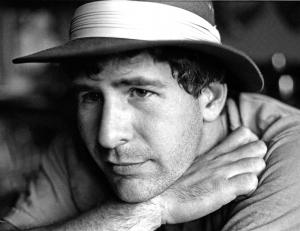 Roger H. Katz, 65, died in April in his home in Vermont, following an extended illness. After growing up in the Detroit area, Roger attended Marlboro, where he said he was referred to as “the guy with the camera,” in the late 1960s, with a course of study in physiology. He remained a loyal resident of the Brattleboro area after that time, although he received his bachelor’s degree in physiology from the University of Michigan in 1971 and spent time touring through Europe and the Middle East during the same period. Well known in the Brattleboro community as a professional photographer, Roger established two photography shops, Elliot Street Camera and Photo 101. His most recent business, Black Mountain Studios, was operated out of his home in Dummerston. He had also been recently employed at Omega Optical in Brattleboro, working for his friend Bob Johnson, whom he first met as a fellow Marlboro student. In conjunction with his passion for photography, Roger enjoyed cycling, contra dancing, cross-county skiing, snowshoeing, and time spent in the woods. He could often be found at Marlboro College events, usually “with a camera,” and was a great advocate of alumni engagement with current and prospective students. In a similar vein, Roger thoughtfully bequeathed some of his considerable collection of equipment to the photography program at Marlboro, as well as a generous financial gift.
Roger H. Katz, 65, died in April in his home in Vermont, following an extended illness. After growing up in the Detroit area, Roger attended Marlboro, where he said he was referred to as “the guy with the camera,” in the late 1960s, with a course of study in physiology. He remained a loyal resident of the Brattleboro area after that time, although he received his bachelor’s degree in physiology from the University of Michigan in 1971 and spent time touring through Europe and the Middle East during the same period. Well known in the Brattleboro community as a professional photographer, Roger established two photography shops, Elliot Street Camera and Photo 101. His most recent business, Black Mountain Studios, was operated out of his home in Dummerston. He had also been recently employed at Omega Optical in Brattleboro, working for his friend Bob Johnson, whom he first met as a fellow Marlboro student. In conjunction with his passion for photography, Roger enjoyed cycling, contra dancing, cross-county skiing, snowshoeing, and time spent in the woods. He could often be found at Marlboro College events, usually “with a camera,” and was a great advocate of alumni engagement with current and prospective students. In a similar vein, Roger thoughtfully bequeathed some of his considerable collection of equipment to the photography program at Marlboro, as well as a generous financial gift.
Parting Shot
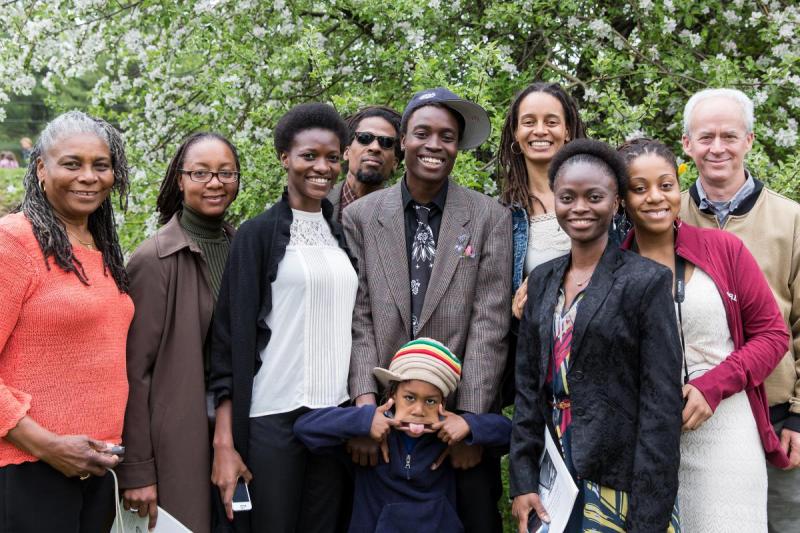 Kalie Kamara ’13 is surrounded by his (mostly) smiling family, including godfather Will Fielding ’79 (right), after commencement. Photo by Tobias Gelston
Kalie Kamara ’13 is surrounded by his (mostly) smiling family, including godfather Will Fielding ’79 (right), after commencement. Photo by Tobias Gelston